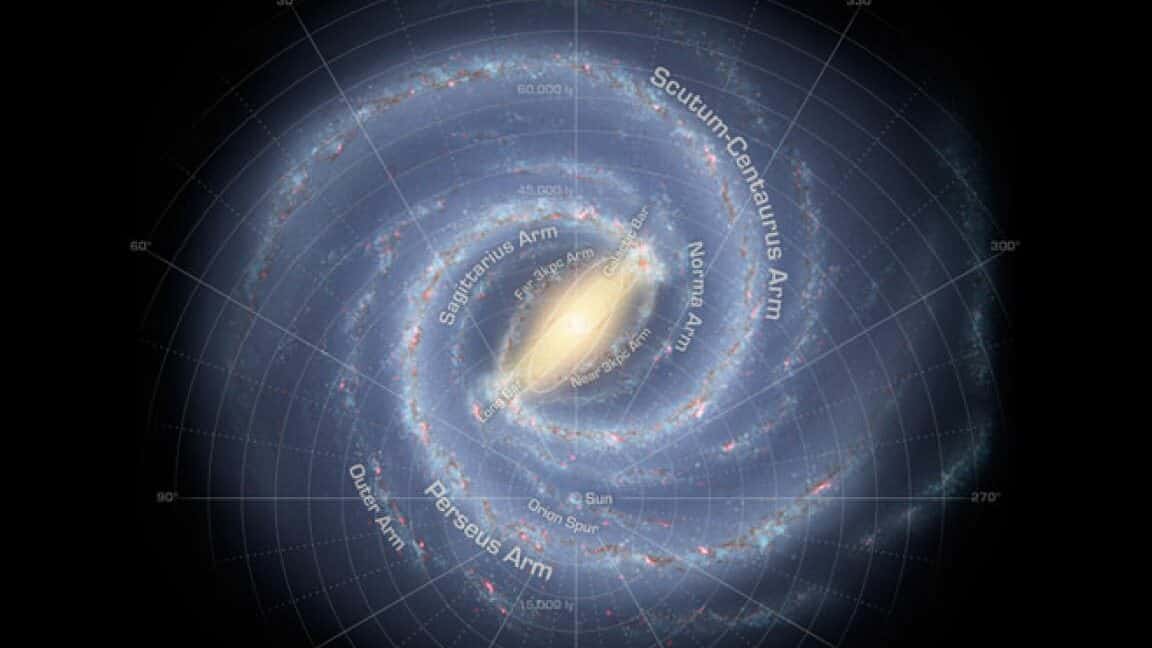
The galaxy we live in is known as the Milky Way. It is home to our planet Earth, as well as the other planets in our solar system. In addition to these planets, the Milky Way also contains an incredible number of stars and exoplanets, estimated to be between 100 and 400 billion. Among these celestial bodies, some are part of systems that resemble our own Solar System, while others are wandering freely through space, earning the name “orphan planets”.
There are approximately 20,000 nebulae within the Milky Way galaxy. These celestial objects, known as clouds of dust and gas, primarily consist of hydrogen and helium. Because the galaxy itself contains a significant amount of dust, scientists have only managed to categorize a mere 3.5 thousand nebulae thus far. Another component of the Milky Way is comprised of dark matter, which does not engage in electromagnetic interactions or emit light. However, it does influence the motion of stars within galaxies. Dark matter is estimated to make up around 22% of all matter in the universe.
What the Milky Way appears like
On a grand cosmic scale, the Milky Way takes the form of a thin disk. When observed from Earth, the central region of the galaxy emits a general luminosity created by the majority of stars. However, when one directs their attention to the side, they are only able to perceive stars that are in close proximity to our solar system.
Scientists have approximated that the Milky Way is approximately 1 trillion times more massive than the Sun. A staggering 95% of its mass is composed of dark matter, while stars account for around 1% and interstellar gas makes up a mere 0.1%. The remaining 4% is attributed to planets and interstellar dust.
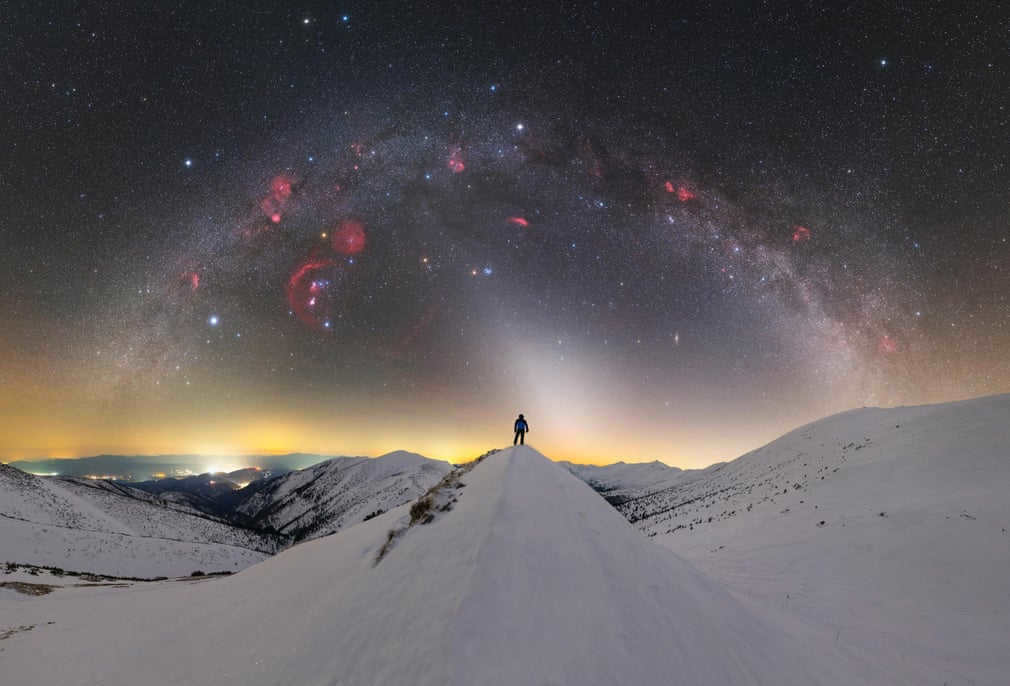
Here is a photo of the Milky Way taken from the Lower Tatra Mountains in Slovakia (Photo: Tomáš Slovinský / Milky Way photographer of the year)
The Discovery of the Milky Way
When viewed from Earth, the Milky Way appears as a streak of white light scattered across the dark sky. In accordance with ancient Greek mythology, Hera, the supreme goddess and wife of Zeus, accidentally spilled milk across the entire sky.
It is impossible to determine who first observed the Milky Way – our ancestors gazed at it every night. In 1610, Galileo Galilei, using his self-made telescope, made the groundbreaking discovery that the glow of the Milky Way is a result of individual stars.
Scientists used to think that the entire universe was made up of the stars in the Milky Way. However, in 1923, astronomer Edwin Hubble discovered something groundbreaking. While studying the Andromeda Nebula, he realized that it was actually a separate galaxy, now known as the Andromeda Galaxy. This galaxy is located an astonishing 2.5 million light years away from Earth.

The Andromeda Galaxy (Photograph: NASA, ESA, J. Dalcanton, B.F. Williams, and L.C. Johnson (University of Washington), the PHAT team, and R. Gendler)
What lies at the core of the Milky Way
The Milky Way consists of three primary components – the core, the disk, and the halo:
- The core – is the central region of the Milky Way, spanning a length of 5,000 to 30,000 light-years in a band-like shape. It houses approximately 25% of the galaxy’s stars. Situated at the very heart of the core is Sagittarius A*, an immense black hole with a mass equivalent to that of 4.3 million suns;
- disk The Milky Way spans across 75-100 thousand light years and has a thickness of approximately 1 thousand light years. The disk houses multiple prominent spiral arms, with higher concentrations of stars and gas compared to the rest of the galaxy, making them visually distinct. The Solar System itself resides within the disk, specifically at a distance of around 27 thousand light-years from Sagittarius A*.
- halo – is a spherical region encompassing the Milky Way, with a radius of roughly 100,000 light-years. It harbors aging stars and globular clusters that exhibit random motion as they rotate. Beyond the halo, dark matter extends even further, stretching up to 400 thousand light-years away from the galaxy.
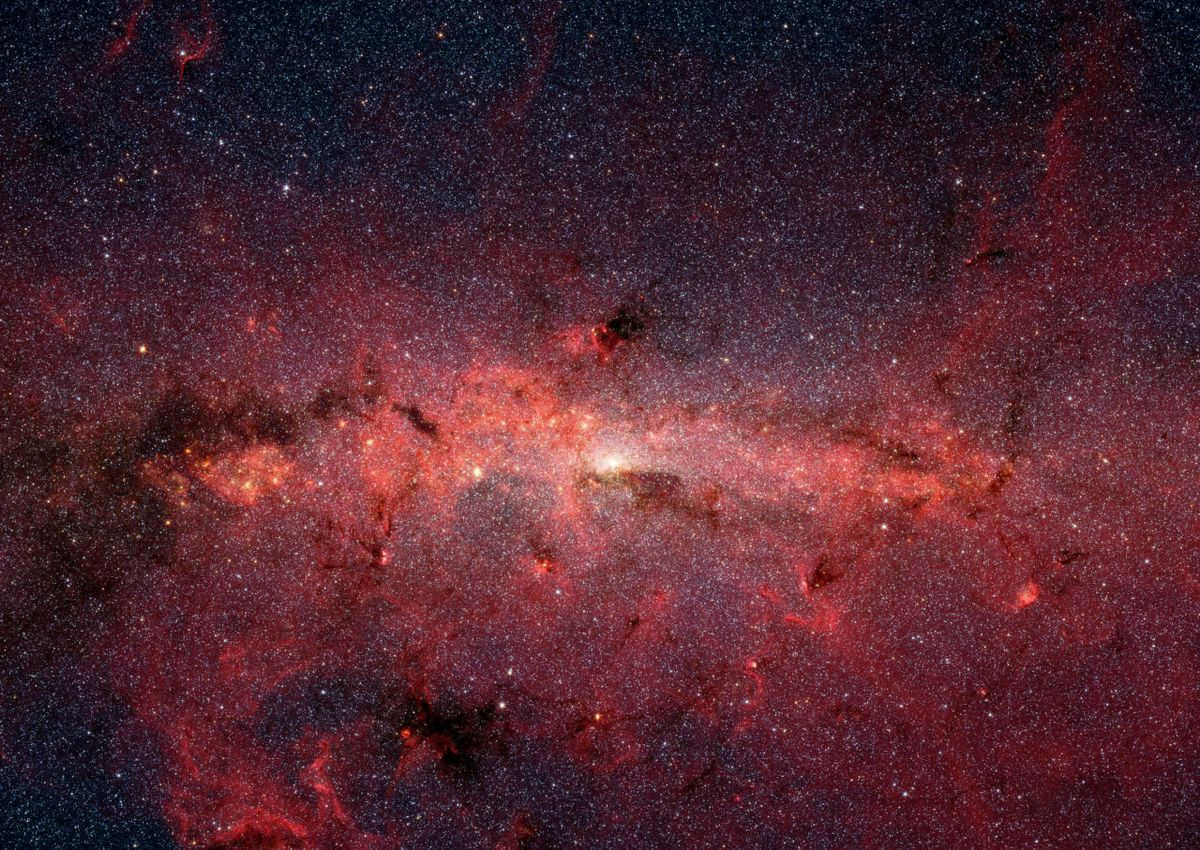
The Milky Way’s Nearest Galaxy
The Milky Way is accompanied by a number of small satellites, as well as two large ones – the Large and Small Magellanic Clouds. They are located at a distance of 163 thousand and 182 thousand light years, respectively. The closest large neighbor to our galaxy is the Andromeda galaxy, which is approximately 2.5 million light-years away. Along with over 80 other galaxies, the Milky Way is part of the Local Group, a cluster of galaxies with a radius of about 10 million light-years, held together by shared gravitational forces.
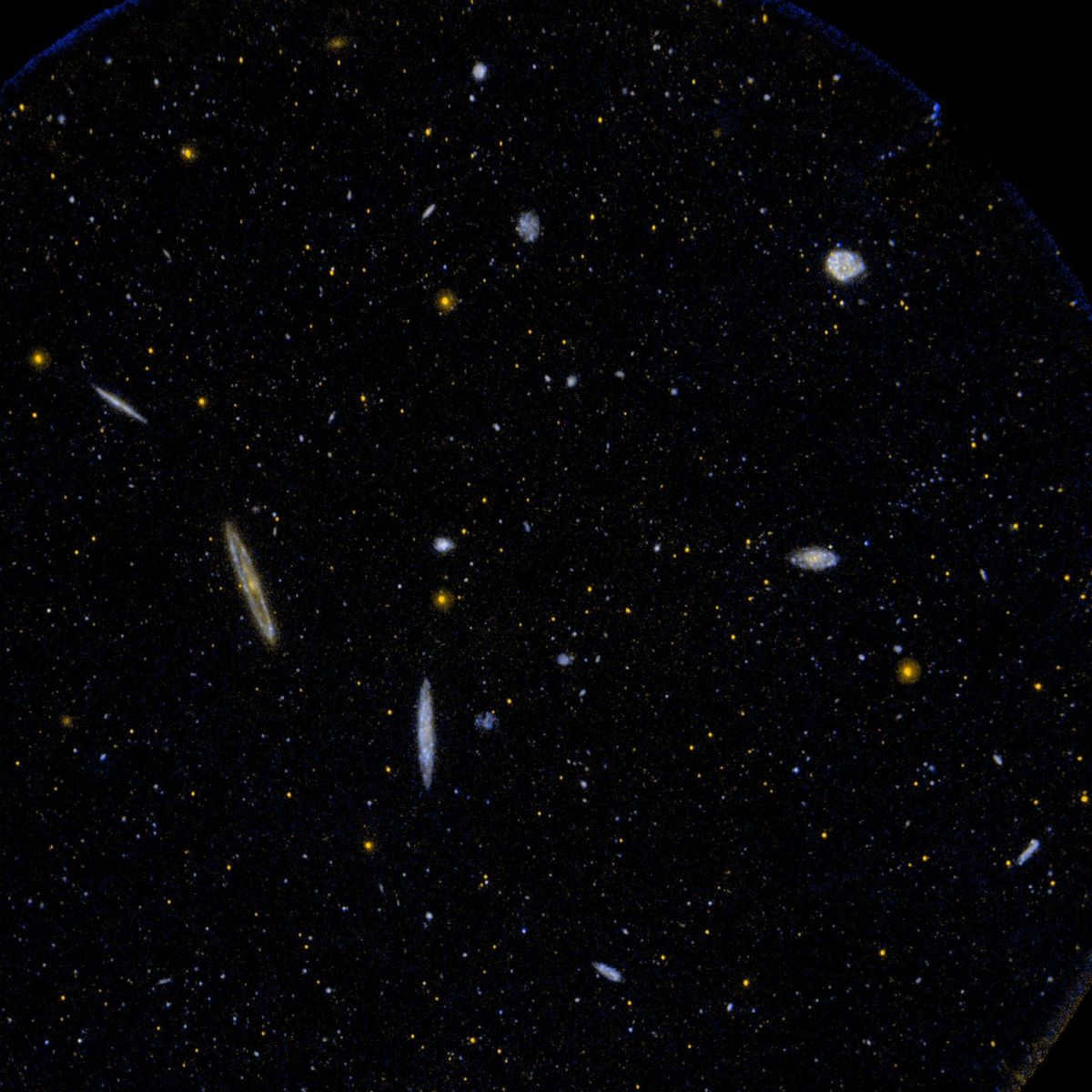
The most massive planet in our galaxy
The most massive planet discovered in the Milky Way could possibly be HD 100546 b, a colossal gas giant in the midst of its formation. Its size is estimated to be approximately 6.9 times greater than that of Jupiter and a staggering 77 times larger than Earth. The exact radius of the planet is not accurately determined due to the presence of surrounding material that may be concealing its fragments. However, the largest planets with precisely known sizes are HAT-P-67 b and XO-6b, both of which have diameters about 2.1 times that of Jupiter.
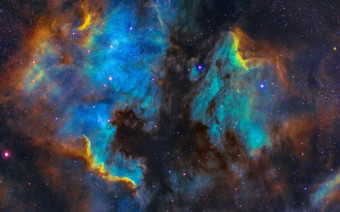
The Path of the Milky Way
When observed from Earth, the Milky Way traverses numerous constellations including Cepheus, Cassiopeia, Ascendant, Swan, Gemini, Orion, Unicorn, Perseus, Big Dog, Corma, Compass, Foxglove, Arrow, and others.
In the future, the Milky Way will collide with Andromeda. In relation to the overall expansion of space, the Milky Way is currently moving at an impressive speed of approximately 630 kilometers per second. In approximately 5 billion years, the two galaxies will collide and initiate a merging process. As a result of this collision, the spiral arms of our galaxy will vanish, along with Sagittarius A*. Due to Andromeda’s central black hole having a mass equivalent to 100 million Suns, it will swiftly engulf our black hole.

The universe
Astronomers are particularly fascinated by the Milky Way galaxy as it is home to our solar system, where Earth is situated. This cluster is comprised of all the stars that are visible to the naked eye, without the need for any additional equipment. On a daily basis, astronomers dedicate their efforts to studying the Milky Way, uncovering new findings that deepen our understanding of the cosmic structure.
What is the shape of the Milky Way?
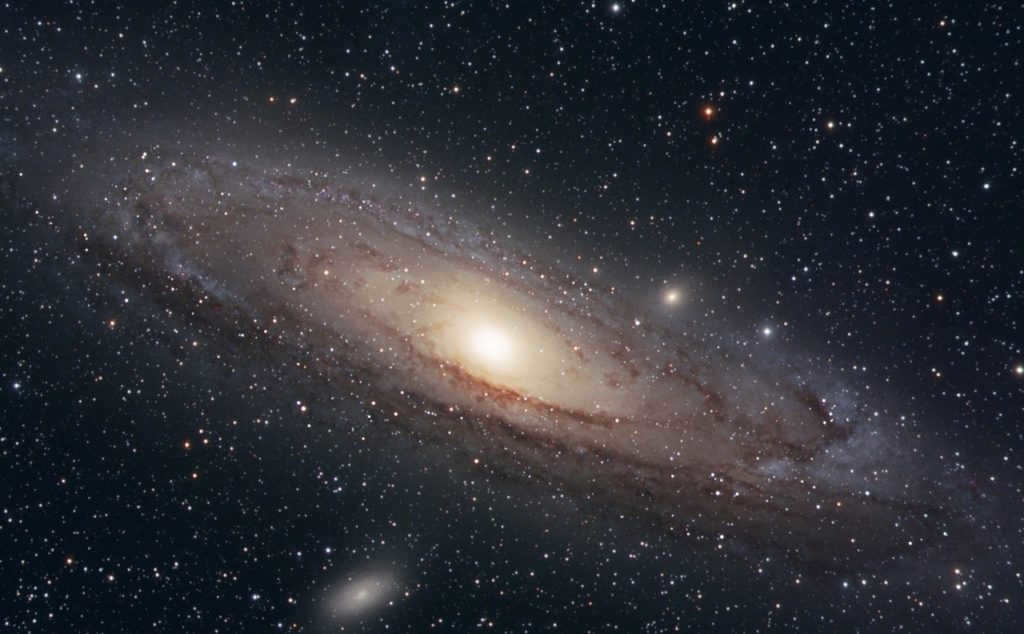

While observing the universe and studying galaxies, Edwin Hubble made an interesting discovery – galaxies can have two distinct shapes: spiral and elliptical. The spiral shape is visually similar to a rotating disk, with curved arms tightly connected to each other. This is exactly how the Milky Way appears.
Before the invention of radio telescopes, accurately determining the size and shape of a galaxy was a challenge for scientists. The presence of dust in outer space hindered the passage of light from stars, leading to errors in their studies. However, the development of radio telescopes allowed researchers to observe radio waves that can travel through matter, providing a clearer picture of galaxies.
Main characteristics of the Milky Way galaxy
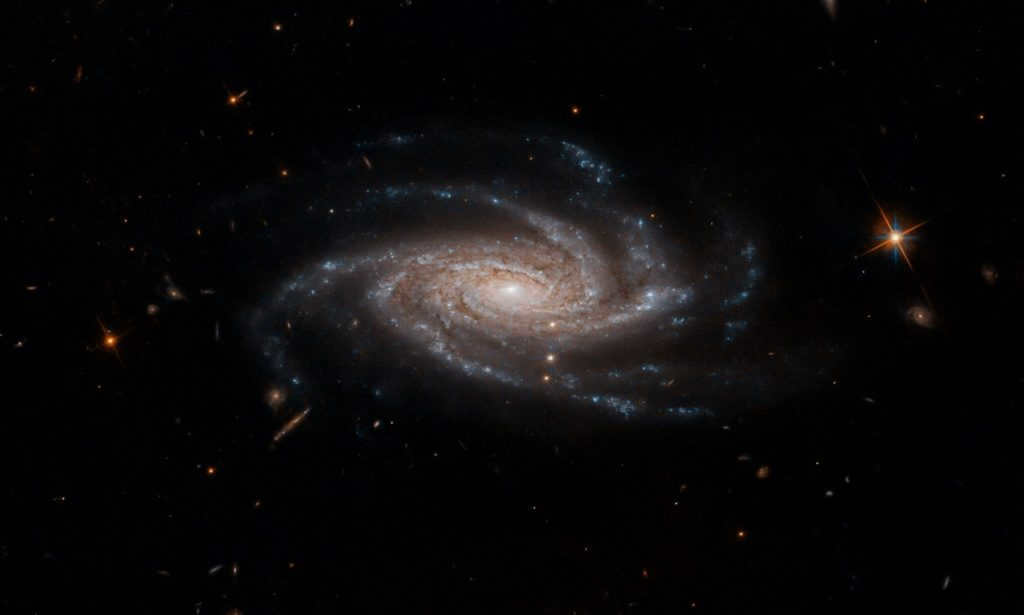
The galaxy is named after a fascinating Greek myth. According to the legend, the titan Kronos devoured the babies that were born to Rhea from him. Devastated by this, Rhea decided to save her last son, Zeus. She cleverly wrapped a stone in a blanket and presented it to Cronus. The titan, mistaking it for Zeus, attempted to feed the stone to gain weight. Rhea then splashed milk on the stone, causing it to bounce off and scatter across the sky, forming the majestic Milky Way. As Zeus grew up, he eventually overthrew Cronus and became the ruler of the gods.
Fascinating fact: Currently, the Milky Way is in the process of absorbing a dwarf galaxy located in the constellation Sagittarius.
Nevertheless, the galaxy will not forever be burdened by its lesser counterparts. Presently, it is already engaged in a gravitational dance with Andromeda, a significantly more colossal entity. Experts speculate that in 3-4 billion years, these two galaxies will converge, resulting in the absorption of the Milky Way.
A comprehensive overview of the Milky Way’s main attributes and parameters
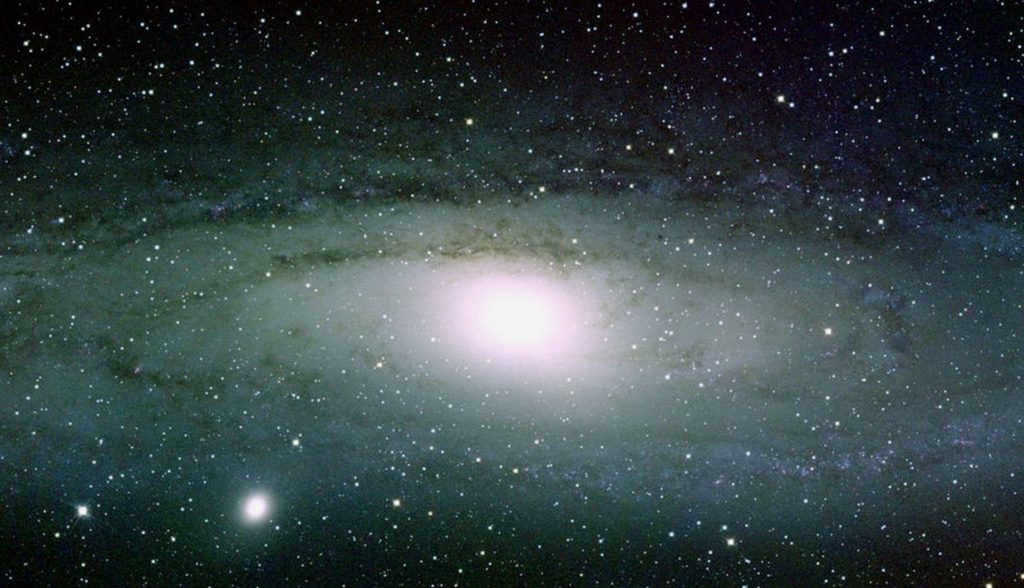
Ever since the advent of suitable technologies, scientists have been studying the Milky Way, as it is the galaxy within which our Solar System resides. Through extensive research, most of its parameters have been accurately established.
The Milky Way possesses the following characteristics:
- It belongs to the category of spiral galaxies;
- It is a member of the Local Group;
- The diameter of the Milky Way spans approximately 100,000 light-years;
- There are between 200 and 400 billion stars within the galaxy;
- The center of the galaxy is located 27 thousand light-years away from the Sun;
- The solar system revolves around the galactic center at a velocity of 230 km/s;
- It is important to note that, because of its immense size, there may be some inaccuracies in the characteristics.
Did you know that the Sun and the planets take 235 million years to complete a full orbit around the center of the galaxy?
The Milky Way: Structure and Composition

The center of our galaxy is home to a brilliant core composed of billions of stars. Its exact dimensions are hard to determine, but scientists estimate that it spans several thousand parsecs (1 parsec = 30.86 trillion km) in length. Furthermore, it is widely believed that a supermassive black hole resides at the heart of the Milky Way.
Stretching through the galactic center is a majestic arm that spans a distance of 27,000 light years. This arm is positioned at a 44-degree angle relative to the Sun. The Milky Way is primarily composed of stars, interstellar dust, gas, and constellations. Young celestial objects tend to be found farther away from the galactic center.
Enveloping the Milky Way is a mysterious dark halo, which houses dwarf galaxies and star clusters. These celestial bodies are influenced by the immense gravitational pull of the galaxy and orbit around it.
The arms of the galaxy rotate around the central point, creating a spiral pattern. This unique movement gives the Milky Way its distinctive flat shape when observed from the side. There are a total of five major arms, each contributing to the overall structure of the galaxy.
Our solar system is located in the Orion arm, which is positioned closer to the inner side of the Milky Way.
The estimated size of the Milky Way is generally believed to be around 100,000 light years in diameter and approximately 1,000 light years in width. However, a recent in-depth study conducted by scientists from the Canary Institute revealed the possibility that the galaxy might actually be 200,000 light years long.
In 2020, a group of astrophysicists conducted a new study, which proposed a significantly larger diameter for the Milky Way – approximately 1,900,000 light years. However, these findings have not yet been officially confirmed.
One of the intriguing questions about the Milky Way is the number of stars it contains. How many stars are there in our galaxy? This remains a subject of ongoing scientific exploration and investigation.
The Milky Way consists of around 400 billion stars, the majority of which are located in neighboring arms. Alongside these stars, the galaxy also houses between 25 and 110 billion brown dwarfs. These brown dwarfs do not meet the criteria to be classified as complete stars due to their insufficient brightness and size.
Size
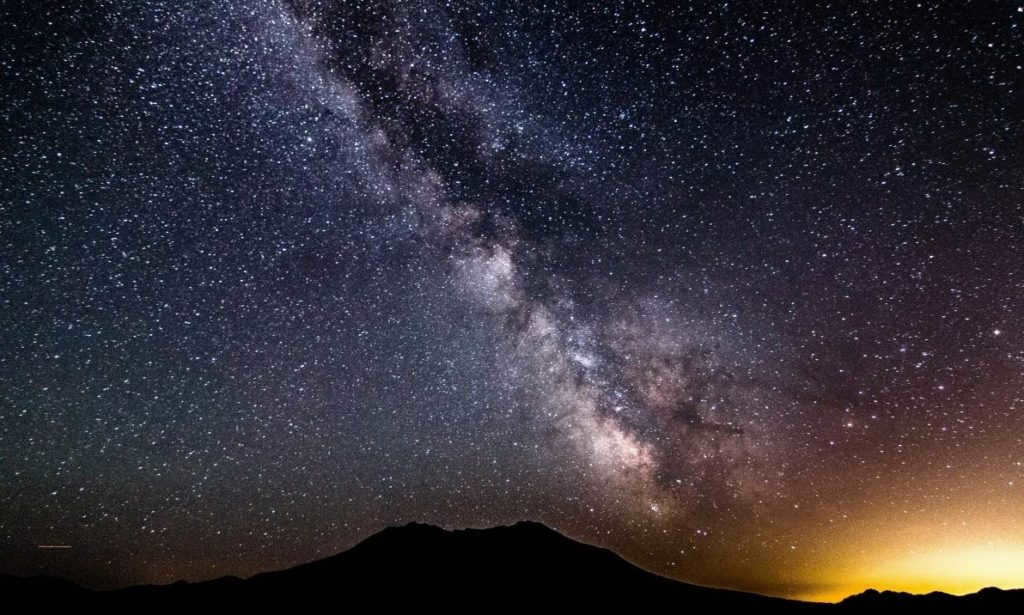

Around our galaxy, the halo is filled with dark matter, which constitutes the majority of its mass. Due to this, determining an exact value is challenging for scientists. In 2009, it was estimated that the mass of the galaxy was 6 * 10^42 kg.
However, more precise studies conducted 10 years later in 2019 revealed that this parameter is twice as large, measuring at 130,000 light years in length.
Hard Drive
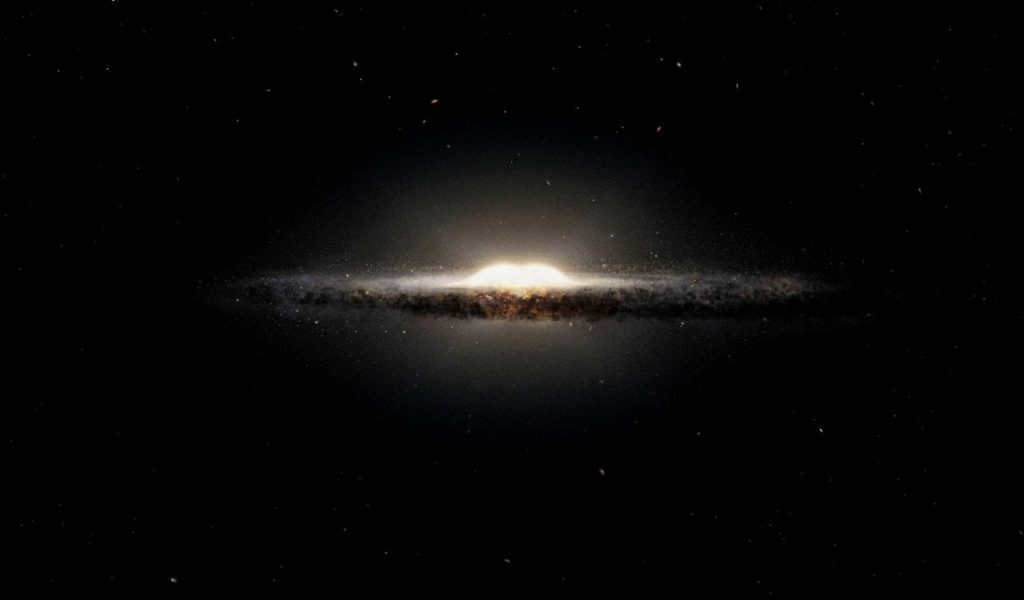
To further explore the Milky Way’s disk, scientists are currently developing advanced technologies that allow for the observation of distant objects and the acquisition of new information.
Fascinating fact: The classification of the Milky Way as a spiral galaxy wasn’t established until the 1980s. It was ultimately confirmed by the Lyman Spitzer Telescope in 2005.
Spanning 100,000 light-years in length, the disk of the Milky Way is in a constant state of rotation, although there are variations in certain regions. While objects at the center remain static, stars located further out begin to move at speeds ranging from 200-230 km/s or even faster.
Comprised mostly of young stars, typically no older than a few billion years, the flat disk of the Milky Way is home to arms that date back 10 billion years. As one moves further away from the Milky Way, objects tend to be more mature in nature.
The nucleus
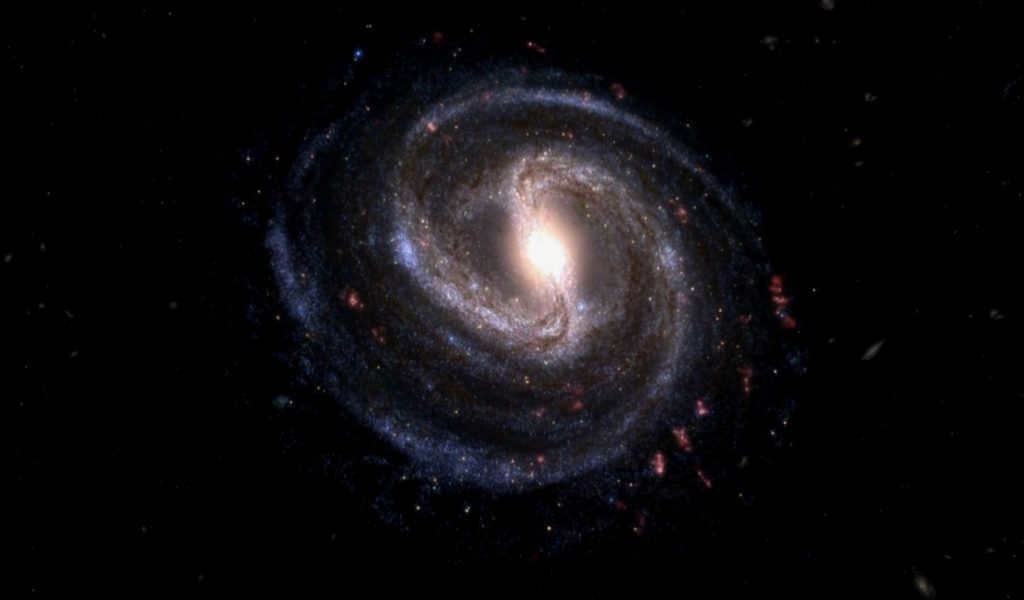
Located at the heart of the Milky Way is a massive spherical structure known as balgey, stretching over 27,000 light-years. It is believed to house a significant black hole called Sagittarius A, as well as another smaller black hole. These black holes are surrounded by a multitude of stars, which gives the core its distinctive glow.
Running through the center of our galaxy is a bar-shaped formation primarily composed of red stars, which are exceptionally ancient. In 2016, Japanese astronomers made an astonishing discovery – a colossal black hole with a mass equivalent to a hundred thousand suns, situated 200 light-years away from the core. Additionally, within the core’s vicinity, twelve systems have been found where black holes could potentially exist.
Arm coverings
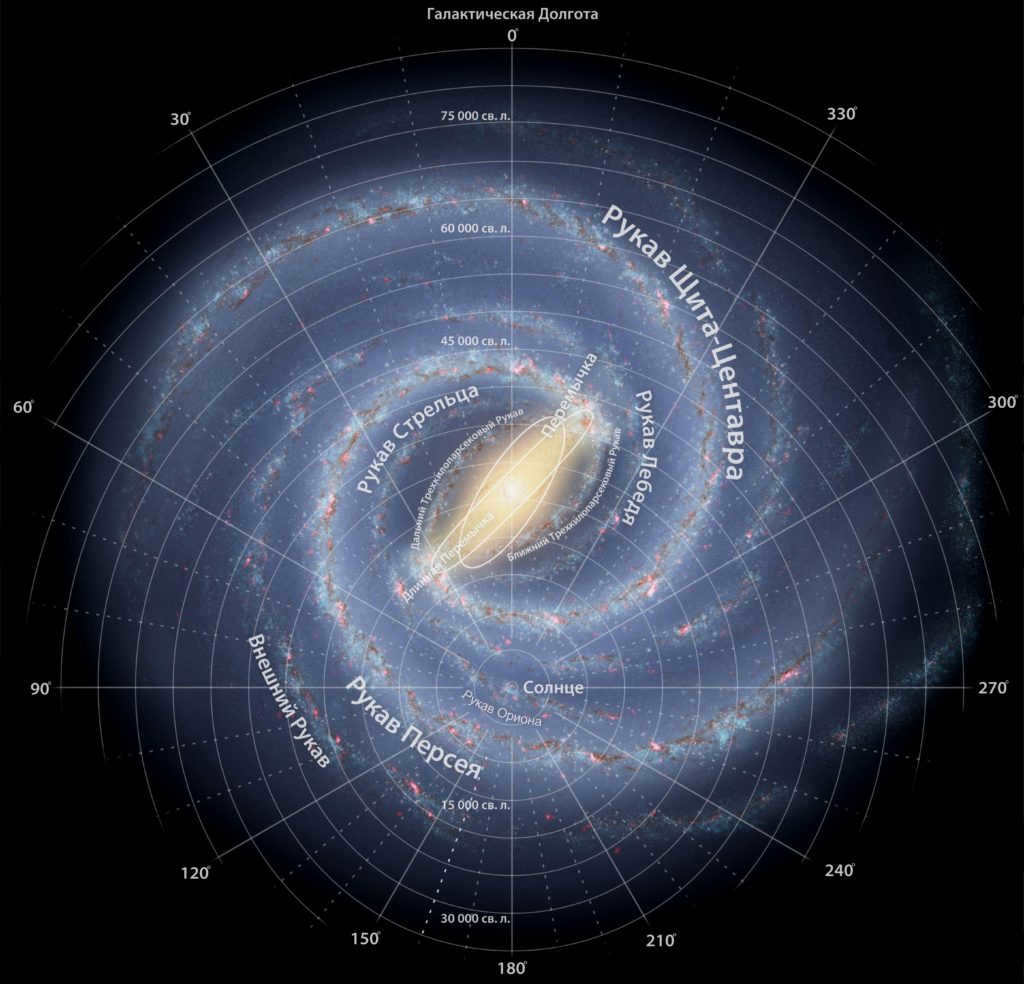
Due to the fact that the Milky Way is a spiral galaxy, it possesses arms that are situated within the plane of the disk. Encircling these arms is the halo, which is also referred to as the “corona”. Because the solar system is positioned in Orion’s arm, which is located inside the disk, scientists are unable to obtain an external perspective of its structure.
Nonetheless, cutting-edge research that utilizes the properties of hydrogen is assisting in constructing a theoretical representation of what the arms may appear like. It is hypothesized that they are densely clustered together, and furthermore, among them there could be pairs that share a common region. And relatively recently, astronomers have put forth a theory that the Milky Way might possess a four-arm configuration.
The celestial ring
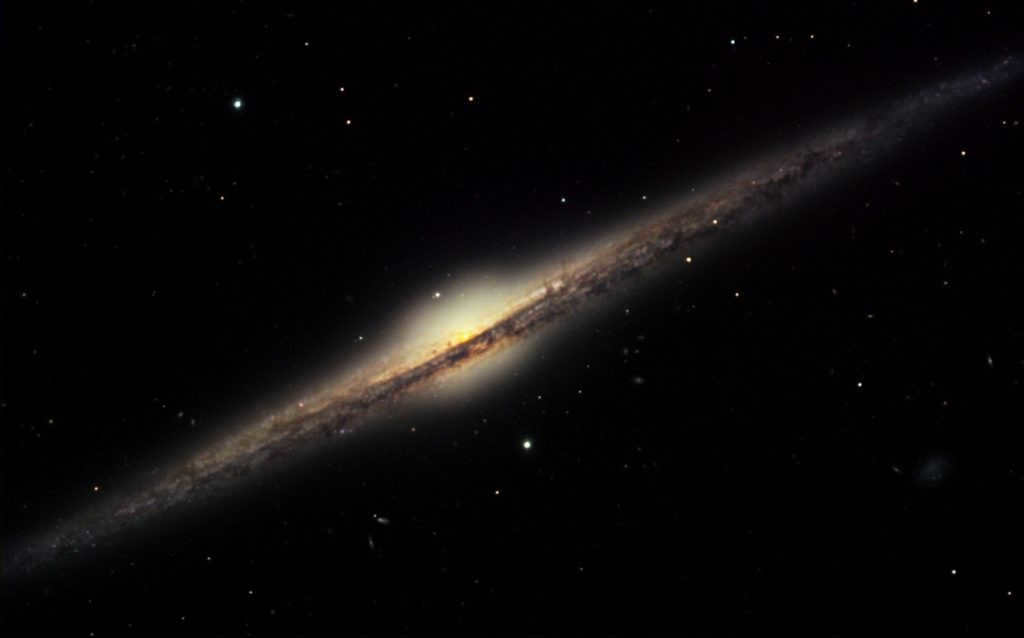

The spherical shape of the halo surrounds the Milky Way’s disk. Its dimensions range from 5,000 to 10,000 light-years in various directions. Within it are found ancient stars and clusters.
Fascinating trivia: Formerly, it was thought that the farthest stars were located 100,000 light years away from the Milky Way’s core. However, more recently, objects 200,000 light years distant have been uncovered.
Similar to other objects in the cosmos, the Milky Way possesses a specific luminosity, measuring approximately 21 m. This identical measurement can be achieved by combining the brightness emitted by a staggering 10 billion suns. An equivalent radiance is produced by a light bulb with a power output of 8.3 * 10'36 watts.
The Position of the Milky Way in the Universe

In 2015, researchers at the Hawaii Astronomical Institute set out to precisely determine the position of our galaxy, the Milky Way, within the vast expanse of the universe. Along with its membership in the Local Group, the Milky Way is also a component of the Laniakea supercluster. This immense region spans a distance of 500 million light years and is home to hundreds of thousands of stellar clusters.
However, it’s important to note that Laniakea is not the largest structure in the known Universe. It is merely a part of the supergroup known as Keith, which itself is a constituent of the Pisces group – a spatial region teeming with an enormous number of galaxies.
Despite ongoing efforts, scientists have yet to accurately trace the movements of objects within Laniakea. Presently, it is believed that the Milky Way is gradually drifting deeper into the cluster.
The Galaxy of the Milky Way and its Surroundings
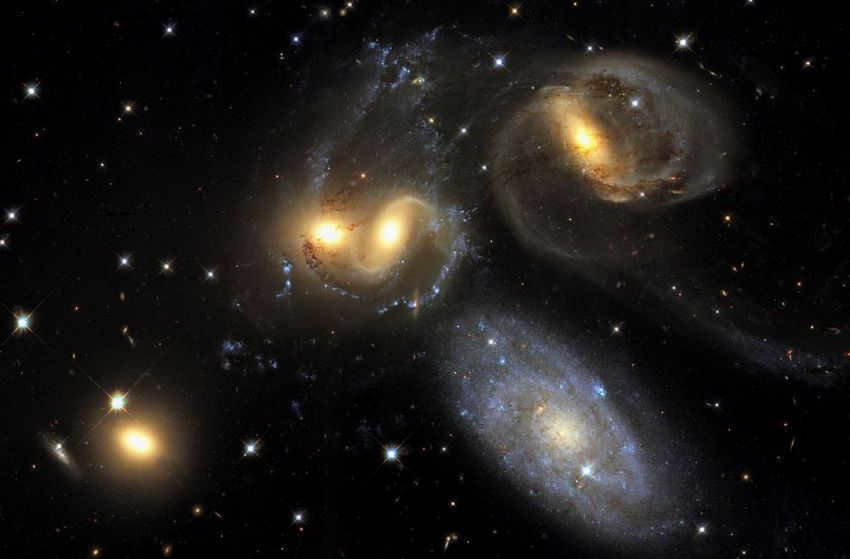
Since the occurrence of the Big Bang and the subsequent formation of the universe, all celestial objects have been in constant motion. Some of these objects are extremely ancient and have already traversed significant distances, while others are just now beginning to take shape.
Only a few centuries in the past, scientists studying the stars believed that the Milky Way constituted the entirety of the Universe, with nothing existing beyond its borders. However, with the advent of more advanced telescopes, it has become evident that other galaxies exist in the vast expanse of space.
The Local Group also consists of irregular and elliptical galaxies that are situated within specific constellations.
Classification and overall organization
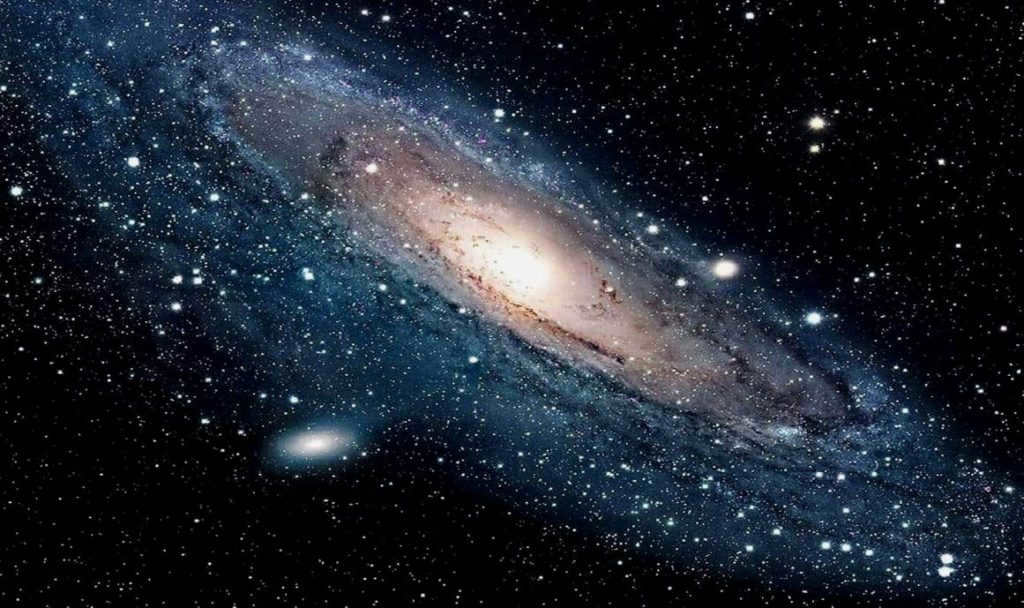
The Milky Way is classified as a spiral galaxy with a central bar. This type of galaxy is the most common in the Universe, accounting for about 56% of all galaxies. Additionally, 65% of spiral galaxies have a central bar.
Located at the heart of the Milky Way is an active nucleus that emits significant amounts of energy into space. Surrounding the nucleus is a disk composed of gas, dust, and rapidly rotating objects. Adjacent to the center is a bulge, which houses the central bar. This bulge is made up of a multitude of massive stars.
Did you know? The bulge is the most luminous part of the Milky Way, although its light is not visible from Earth due to the presence of the arms.
There is a beam above the bulge where the arms are connected. It holds a significant amount of gas, which is the reason for the continuous formation of new stars in this region. Objects within the arms rotate at varying speeds, and the area where the Solar System is located can be referred to as the most peaceful. This area lacks large clusters of galactic dust, which can have a negative impact on stars and planets.
Surrounding the visible disk of the Milky Way is a halo – a massive spherical region that contains isolated clusters. These clusters also move in relation to the galaxy’s center, but at a much slower and more chaotic pace than the objects within the disk. Recently, astronomers have determined that the clusters within the halo are remnants of dwarf galaxies that were assimilated by the Milky Way.
Theoretical concepts describing the structure of our Milky Way

In ancient times, it was believed by scientists that the stars in the night sky were connected and moved together due to their mutual influence. However, the available technology during that period did not allow for the creation of an accurate model of the galaxy. It was not until the 1700s that William Herschel was able to provide evidence that the Milky Way has a disc-shaped structure.

As stated earlier, the solar system does not reside in the nucleus of the Milky Way. The Sun emerged amidst the arms of Sagittarius and Perseus. These spiral appendages are situated 4,000 light-years away.
The solar system is positioned nearer to the periphery of the galactic disk rather than the center. Its distance from the latter amounts to approximately 28,000 light-years. The Sun gradually orbits around the core of the Milky Way, completing a full revolution in excess of 220 million years. This implies that the Earth has encircled the galaxy roughly 30 times since its inception.
In the Milky Way, the Sun resides in a specific region where the spiral arms and celestial bodies orbit at a synchronized pace. This fortunate positioning shields the star and its planets from constant exposure to gases, dust, and other materials. Experts posit that our solar system’s location in this sector is crucial for the possibility of life on Earth to thrive.
Positioning of celestial bodies
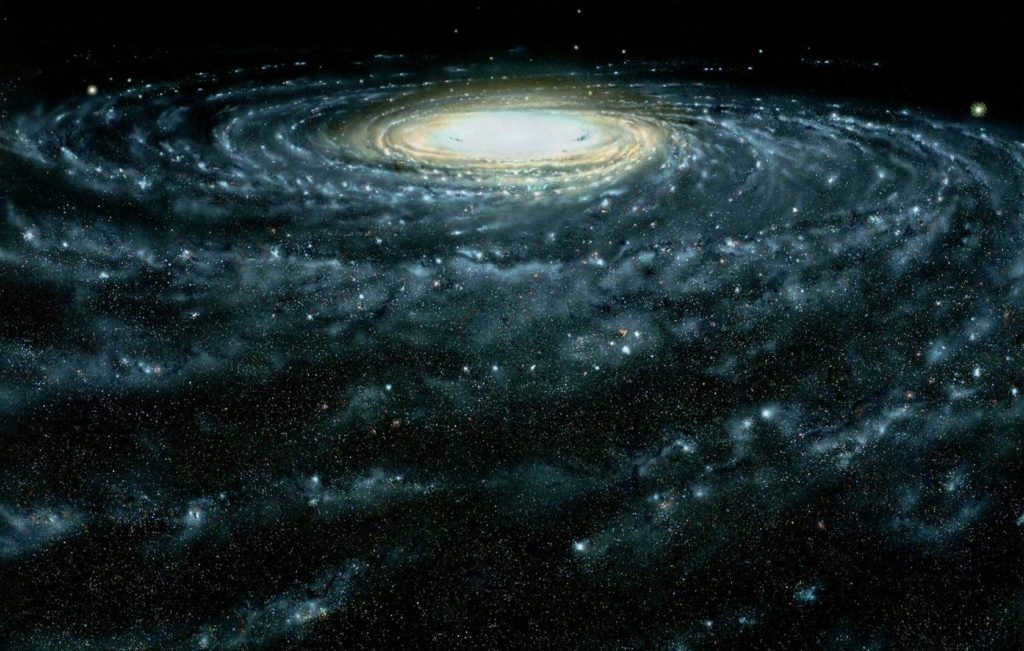
The section of the galaxy where humans can observe stars with their naked eyes is known as the Orion arm. Under optimal lighting conditions, approximately 9,000 stars are visible to the human eye.
The central region of the galaxy is home to a significant concentration of stars, which explains its intense brightness. Moving towards the outer regions of the galactic disk, one can find younger celestial objects that belong to various constellations and are part of one of the arms.
There are also stars in the halo, although their quantity is significantly smaller compared to those located in the central region. While the arms can contain billions of star clusters, the dark regions of the halo contain millions of stars. The majority of stars in the halo are considered very old, having already lived most of their lives.
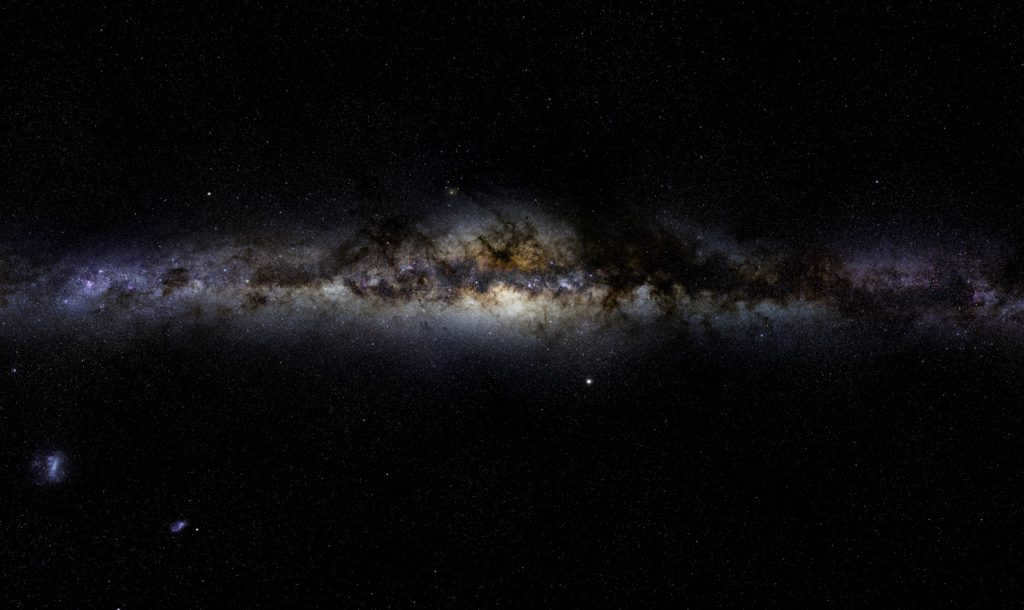
Scientists are unable to determine the exact age of the Milky Way, but it is widely believed to be an ancient galaxy. One piece of evidence that supports this notion is the discovery of a star called HD 140283, which is located within the Milky Way and is only 100 million years younger than the universe itself.
It has been observed that all the elements found within the space of the Milky Way, including those that make up its stars, were once part of other stars. These stars, however, had relatively short lifespans and eventually exploded. The gases released during these explosions gradually came together to form the galaxy we see today.
As the Milky Way formed, it began to assimilate smaller galaxies known as dwarf galaxies. Even now, its south pole continues to attract gases from the Magellanic clouds, further enriching the galaxy’s composition.
Scientists have determined that the galaxy has already passed the halfway mark in its lifespan. The regions within the galaxy have very little gas left, making it difficult for new stars to form. However, the existing stars are still relatively young and will continue to exist for a significant period of time. It is estimated that the stars will start to dwindle in approximately 5 billion years. At that point, the Milky Way will begin its approach towards Andromeda. While both galaxies will eventually merge, Andromeda, being larger in size, has a higher chance of coming out victorious in this cosmic collision.
However, astronomers cannot guarantee that events will unfold exactly as predicted. Given the vast timescale involved, there is a possibility for significant changes to occur during this period.
Legends and Folklore
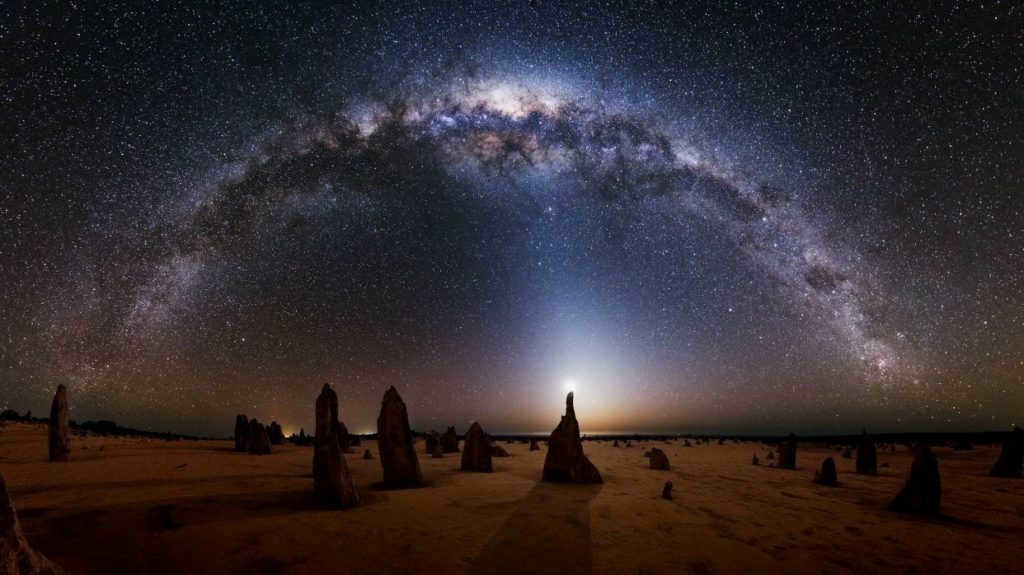
Various nations possess their own folklore surrounding the origin of the Milky Way. Within certain Arab civilizations, a tale exists concerning the deity Vahagn, who absconded with straw from Barsham and concealed himself in the heavens. During his flight, he gradually shed branches and reeds, which eventually coalesced to form the galaxy.
In Hungary, it is believed that the stars of the Milky Way are actually sparks that come from the hooves of Atilla’s horse. According to the myth, the horse descended from the sky in order to help the Sechs. In India, there is a belief that the galaxy was created when a pink cow spilled its milk into the sky. In both China and Japan, there are myths that describe the Milky Way as a river that spills across the sky. In Maori mythology, it was believed that the Milky Way was a boat that the Gods used to sail across the sky.
The people of India were convinced that the galaxy was made up of ash. According to their belief, a girl intentionally scattered ash in order to guide the warriors back home. In Finland, there was a belief that the Milky Way was formed by birds flying across the sky. Many other countries also associate the appearance of the galaxy with birds and their ability to fly.
If you come across any mistakes, kindly select the part of the text and hit Ctrl+Enter to report it.
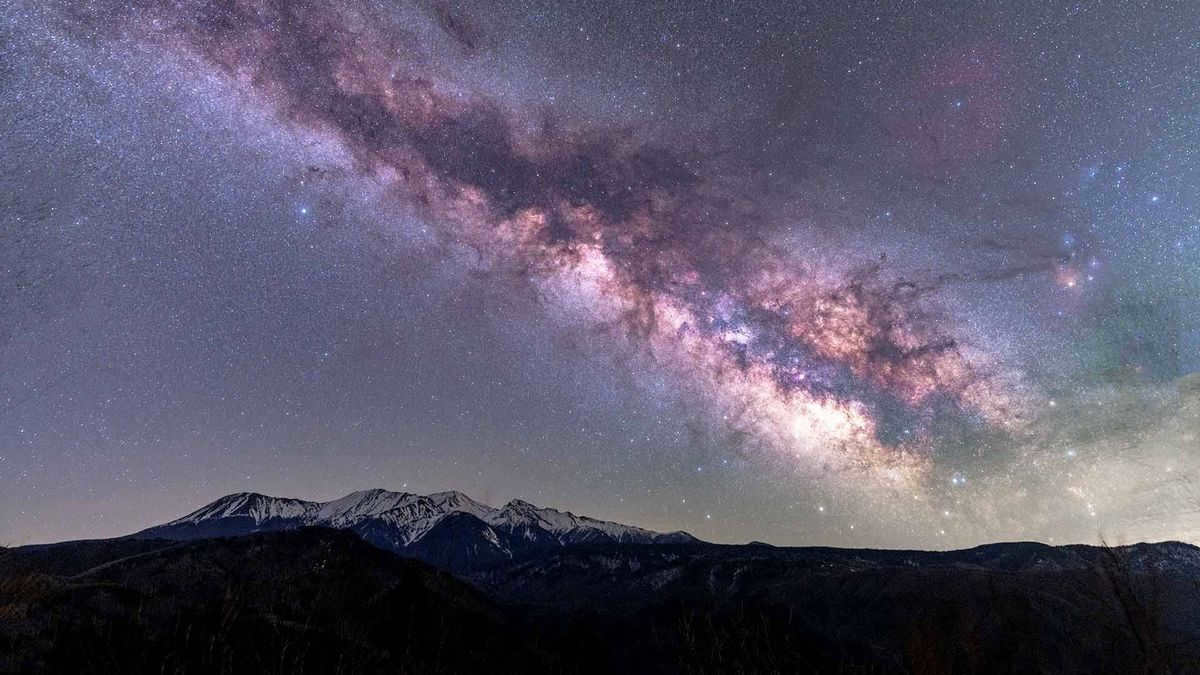
This article provides a compilation of frequently asked questions regarding the Milky Way. Explore this article to discover the name of our galaxy, our position within it, and the optimal time for observing it.
What is the Milky Way?
The Milky Way is a vast collection of dust, gas, and numerous stars, including our very own Sun. Due to Earth’s location within this galaxy, it is commonly known as “our galaxy.”
It may be difficult to comprehend that this luminous band in the nocturnal expanse is indeed an immense galaxy that extends billions of kilometers surrounding our world. But just how immense is it? Let us explore.
The dimensions of the Milky Way
In terms of size within the Local Group of galaxies, the Milky Way holds the second position, with Andromeda taking the lead. The Milky Way spans a width of 105,700 light years, whereas Andromeda stretches across 220,000 light years. Interestingly, the dimensions of the entire Local Group of galaxies, which comprises several dozen galaxies, amount to 10 million light years.
What is the origin of the name “Milky Way”?
The moniker for our galaxy, along with other celestial objects, can be traced back to ancient Greece and Rome. In the view of the Greeks and Romans, a cluster of stars in the sky resembled a river of milky substance. According to Greek mythology, it was believed that this milky flow was caused by the goddess Hera spilling milk across the sky, while Roman myths attributed the Milky Way to the milk of their goddess Opa.
Interestingly, different cultures perceived our galaxy in varying ways. For instance, in eastern Asia, it was referred to as the Silver Sky River, while the Finns and Estonians called it the Bird’s Path. In South Africa, it was believed to be the Ridge of Night.
Which category does the Milky Way galaxy fall into?
The Milky Way galaxy falls into one of the four main categories: spiral, elliptical, lenticular, and irregular. The Milky Way is specifically classified as a spiral galaxy with a bar. The bar, or “lintel,” is a bright band of stars located in the center of the galaxy. Inside this bar is the galactic nucleus, and two spiral arms extend from its edges. Unlike a typical spiral galaxy like Andromeda, the arms of the Milky Way do not lead directly to the center (nucleus), but rather to the bar.
What is the position of Earth in the Milky Way Galaxy?
For those who never imagined being in close proximity to a massive black hole, here’s some good news: we are situated quite far from the center of the Milky Way. Our Sun is positioned approximately 27,000 light-years away from the core, which is about halfway between the galaxy’s center and its outer edge.
Within the Milky Way, our solar system is located in a relatively small arm known as the Orion arm or Orion’s Spur. This arm spans about 3,500 light-years in width and over 20,000 light-years in length. It derives its name from the constellation Orion, in which it is observable. Our position within this arm accounts for the abundance of bright objects visible in the constellation of Orion – we are simply gazing at our “home” spiral arm.
What lies at the heart of the Milky Way galaxy?
The central region of our galaxy is known as the Galactic Center. It is home to a remarkably massive black hole called Sagittarius A*, which boasts a mass of more than 4 million times that of our Sun. Spotting this black hole would necessitate the use of a specialized radio telescope.
Even without any optical aids, the average person can still catch a glimpse of the Galactic Center – the galaxy’s core shines brilliantly despite its vast distance from Earth (27,000 light years). This luminosity can be attributed to the immense number of stars residing there, with approximately 10 million stars per parsec in the Galactic Center.
How can we determine the appearance of the Milky Way?
When it comes to determining the shape of the Milky Way from within, it poses a challenge. As we are unable to venture beyond the confines of our galaxy, capturing an external photograph becomes an impossibility. Nonetheless, we have managed to gather a few hints that have shed light on the exact appearance of the Milky Way:
- Astronomers study other galaxies and compare their behavior to that of our own. For instance, by measuring the velocity of stars and gas within the Milky Way, they discovered that our galaxy exhibits a simple and symmetrical rotation, a characteristic commonly associated with spiral galaxies.
- Given that the Milky Way appears as a elongated band in the celestial sphere, it can be inferred that its shape is that of a disk and we are observing it from an edge-on perspective. Additionally, we can observe a concentration of stars, known as a bulge, at its core. By examining other galaxies, it has been determined that disk-shaped galaxies with a central bulge are typically of the spiral variety.
- The composition of gas, color, and dust in the Milky Way is consistent with that of other spiral galaxies.
How can I observe the Milky Way?
Fortunately, you can observe the Milky Way throughout the year, regardless of your location on Earth. However, due to Earth’s rotation, the center of the Milky Way, which is the brightest and most breathtaking part, may occasionally be obscured from our view.
Here are some key points to keep in mind when observing the Milky Way and the Galactic Center:
- The Galactic Center is located in the constellation Capricorn and is only visible at latitudes between +55° and -90°, just like the constellation itself. If you reside above +55° latitude, you won’t be able to see the Galactic Center! However, you can still observe a portion of it, which is best viewed before and after summer.
- In the Northern Hemisphere, the Galactic Center is visible from March to October.
- The Milky Way’s center is not visible during the remaining months because it is in close proximity to the Sun..
- In the southern latitudes, the observing conditions are more favorable as the visibility of the galactic center reaches its peak during the winter season, when nights are longer and darker.
- Initially, the galactic center becomes visible shortly before dawn. Over time, the visibility period extends and reaches its peak in June and July. During these months, the center can be observed throughout the entire night.
- To observe the galactic center, you must locate a very dark area with minimal light pollution. To assist you with this, you can utilize resources such as NASA’s Blue Marble, International Dark Sky locations, and Dark Site Finder. Alternatively, you can seek out the nearest observatory, as they are typically situated in the darkest locations.
- The sky needs to be clear and without any clouds. To determine when such a night will occur, you can utilize an astronomy application that displays observing conditions. One example is the free app Sky Tonight, which can be used offline.
- The phase of the moon plays a significant role. A new moon is ideal, as the moon’s light will not interfere with observations.
- If you are planning to capture photographs of the Milky Way and its center, utilize tools that can help you visualize the galaxy’s position in the sky. We recommend the Ephemeris app, which can predict the visibility of the Milky Way and provide the precise location of its nucleus. Additionally, Ephemeris can assist in quickly finding and checking detailed information about the Sun, Moon, and Milky Way for any given date and time.
Frequently Asked Questions
What is the total number of stars in the Milky Way galaxy?
Providing an exact count is challenging; however, the Milky Way is estimated to contain a minimum of 100 billion stars. Scientists believe that the actual number lies within the range of 100 billion to 400 billion stars.
How many planets exist within the Milky Way galaxy?
According to scientific estimates, there are at least 100 billion planets in our galaxy, with more than 10 billion of them being similar to Earth in terms of their characteristics.
What is the number of solar systems in the Milky Way Galaxy?
While our solar system is the only one officially named in the Milky Way galaxy, there have been over 3,200 other stars discovered in the Milky Way that have planets orbiting around them.
Through how many constellations does the Milky Way pass?
There are a total of 30 constellations that the Milky Way passes through. The constellation Capricorn is where the galactic center, the brightest part of the Milky Way, is situated.
We trust that this article has addressed the most commonly asked questions about the Milky Way. Feel free to reach out to us on social media with any further inquiries and don’t forget to share your own observations.
May your skies be clear and your observations fruitful!
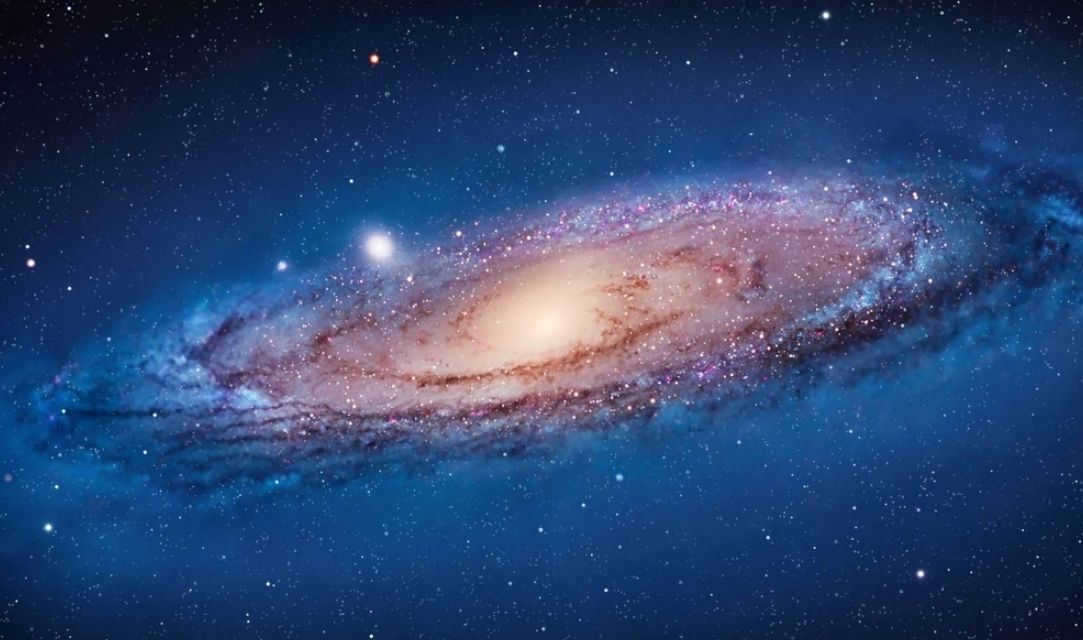
Milky Way Galaxy
In reality, all the stars visible to the naked eye in the sky belong to the Milky Way. The term “Milky Way” is derived from the Latin translation of via lactea, which originates from the Greek phrase galaxias kyklos, signifying a “milky circle.” Spanning approximately 100,000 light-years in distance, the Milky Way conceals numerous enigmas of our cosmos.
What is the definition of a galaxy?
advertisement
Prior to delving into the study of our own galaxy, the Milky Way, it is important to have a clear understanding of what exactly a galaxy is. It was in the 1600s that French astronomer Charles Messier made the groundbreaking discovery and documentation of galaxies, although their true nature remained a mystery at the time. Before the 19th century, galaxies were commonly referred to as spiral-shaped nebulae. However, it was not until 1923 that astronomer Edwin Hubble was able to make the groundbreaking realization that the spiral Andromeda Nebula is in fact a galaxy, and that the Milky Way is just one among countless galaxies that exist within the vast expanse of the Universe.
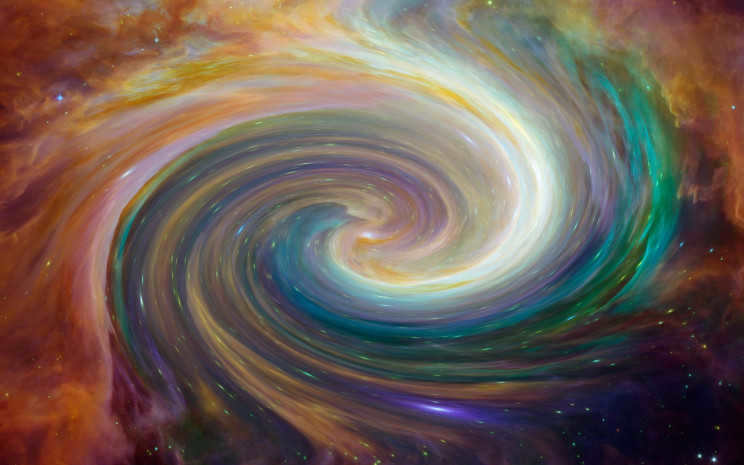
Source: spirit111/Pixabay
Currently, there is a widespread understanding that galaxies are vast celestial formations (significantly larger than nebulae) composed of millions and billions of stars that are held together by the force of gravity. The majority of a galaxy is composed of empty space, with an average distance of five light years between stars. Galaxies exhibit a wide range of sizes, shapes, and masses, but they generally fall into a few basic categories, such as spiral, lenticular, elliptical, and irregular. Most galaxies have existed for billions of years, although determining their exact lifespan is a challenging task. Additionally, nearly every galaxy contains a black hole at its central region.
The Milky Way: Our Vast and Mysterious Galaxy
Our galaxy, known as the Milky Way, is an immense spiral galaxy adorned with multiple arms that elegantly spiral away from a central band of resplendent stars. One may ponder, how can we possibly comprehend the shape of our galaxy when we are confined within its cosmic embrace? Fear not, for radio astronomer Dr. Alastair Gunn unveils the secrets that lie within. Although the spiral configuration eludes our direct vision, we possess a plethora of clues that allude to its magnificent form.
Advertisement
One indication of the galaxy’s nature is the dense arrangement of stars in a single plane, indicating a disk-like structure when seen “from the side.” This concentration is particularly pronounced in the Sagittarius constellation, resembling the central bulge found in other galaxies. Another clue is the rotational trajectory followed by the stars in the galaxy, mirroring the patterns observed in spiral galaxies.
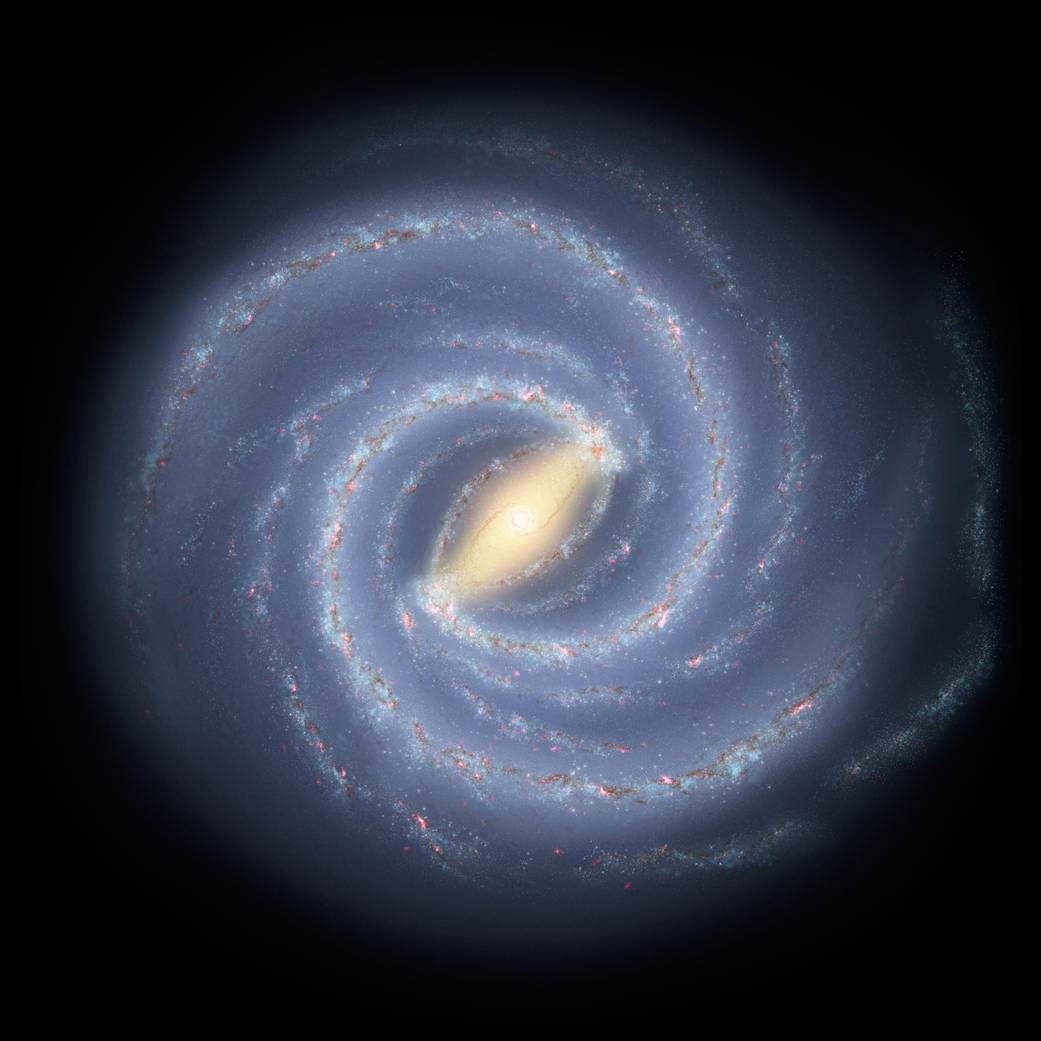
Milky Way Galaxy. NASA
The third clue that stands out is that when the distances to these stars were measured, they seemed to be concentrated primarily along the spiral arms. Estimating the number of stars in the Milky Way is a complex task, and researchers rely on various models to make their calculations. This can involve extrapolating from the number of stars in a small area or estimating the galaxy’s mass and then determining how many stars would be required to account for that mass.
Of course, the specific answer depends on the assumed average mass of a star, but typically the range falls between 100 and 400 billion. Prior to Edwin Hubble’s announcement in 1924 that the spiral Andromeda Nebula was actually a separate galaxy, astronomers believed that the Milky Way encompassed the entirety of the universe.
Advertisement
The Milky Way, our home galaxy, is surrounded by numerous small galaxies. However, the closest large galaxy to us is Andromeda, also known as Messier31 or M31. Andromeda has a radius of approximately 31 kiloparsecs, which is twice the size of the Milky Way. Similar to how the planets revolve around our Sun, both the Milky Way and Andromeda have many small satellite galaxies that orbit around them. Together, these galaxies and their satellite galaxies form a group known as the Local Group.
All of the galaxies within the Local Group are situated around 5 million light-years away from us. In addition to the Milky Way and Andromeda, the Local Group also includes the smaller Triangle Galaxy and approximately 50 other dwarf galaxies.
Nevertheless, there is more to it, as scientists have revealed that the Local Group is actually a constituent of an immense supercluster of galaxies called the Virgo Supercluster or Local Galaxy Supercluster, which encompasses over 100 comparable groups and clusters of galaxies and spans a distance approximately 10 times greater than the diameter of the Local Group.
Now, let’s delve into a handful of additional captivating details about our very own Milky Way:
The shape of the Milky Way is not actually flat
advertisement
Contrary to popular belief, the Milky Way is not a perfectly flat disk. In fact, scientists have discovered that it has a distinctive S-shaped curvature. This discovery was made in the mid-20th century and further research has revealed that this unique feature is also present in other spiral galaxies. So, the idea that the Milky Way is a flat disk is not entirely accurate.
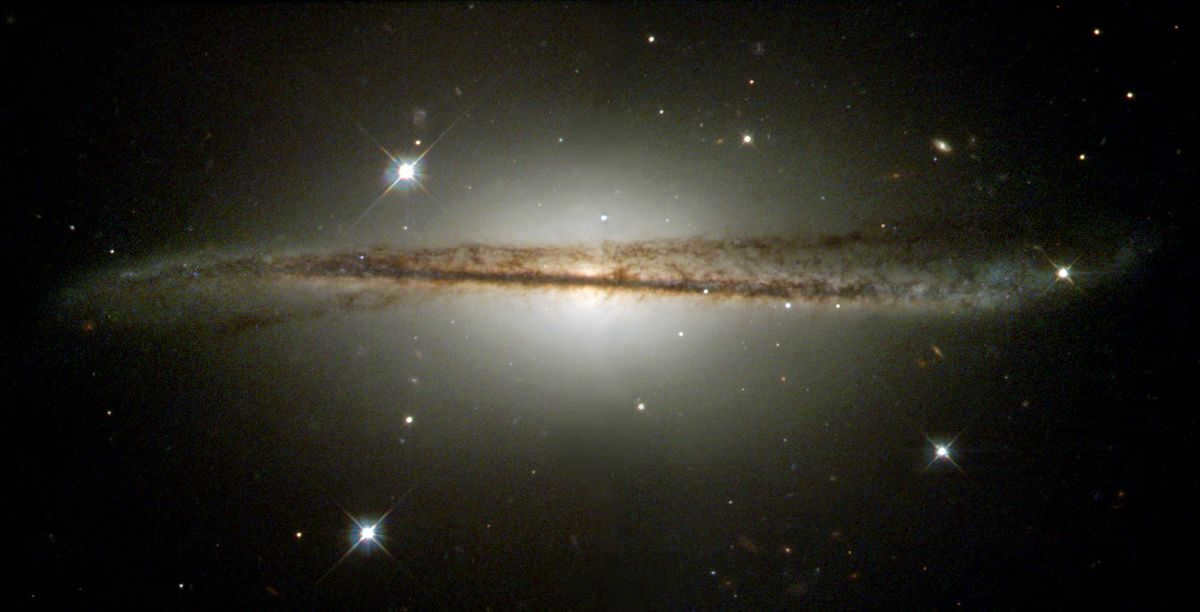
Scientists from NASA and The Hubble Heritage Team have recently discovered a curvature in a spiral galaxy known as ESO 510-613.
In addition, a new study published in the prestigious journal Nature proposes that this unique phenomenon in our Milky Way galaxy could be a result of the presence of satellite galaxies, specifically the Large and Small Magellanic Clouds. These two dwarf galaxies are believed to be in orbit around our Milky Way, and the researchers argue that they may be attracting the dark matter in our galaxy, creating a trail that enhances their gravitational influence on the disk and ultimately causes the observed warping effect.
Galaxy mergers are a common occurrence, and research indicates that at any given time, 5-25% of galaxies are undergoing the process of merging. The Milky Way, our very own galaxy, is a result of past mergers. In the distant future, billions of years from now, the Milky Way will merge with the Andromeda galaxy, ultimately giving rise to a single, colossal galaxy.
By analyzing data obtained from the European Space Agency’s Gaia (Global Astrometric Interferometer for Astrophysics) space telescope, scientists have made a significant discovery regarding the stars within the Milky Way. It turns out that there are two distinct groups of stars. The first group consists of “redder stars” believed to have originated in a larger, metal-rich galaxy. In astrophysics, “metal” and “metallicity” refer to chemical elements heavier than hydrogen or helium. The second group comprises “bluer stars” which may have originated in a smaller, metal-poor galaxy.
According to the results, it appears that the formation of our galaxy, the Milky Way, occurred when it merged with a smaller galaxy known as Gaia Enceladus. Interestingly, even now, the Milky Way continues to draw in stars from two neighboring galaxies, the dwarf spheroidal galaxy Canis Major and the dwarf spheroidal galaxy Sagittarius. These two galaxies are currently the closest and second closest galaxies to the Milky Way, respectively. It seems that the next galaxies on the Milky Way’s menu will be the Large and Small Magellanic Clouds.
Mysterious space bubbles make up our galaxy
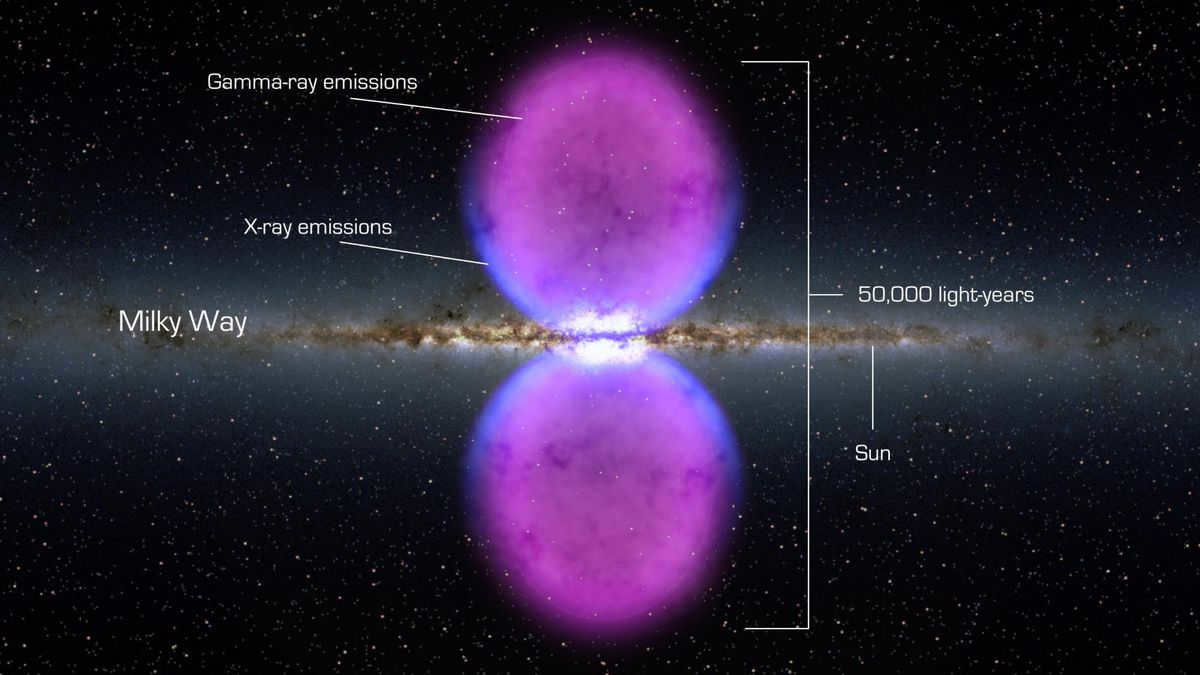
“The Fermi bubble found in the core of the Milky Way. Source: NASA’s Goddard Space Flight Center/Wikimedia Commons
The launch of the Fermi Space Observatory in June 2008 aimed to observe gamma rays. Through the telescope, scientists made a groundbreaking discovery in 2010: the existence of massive spherical formations composed of gas and magnetic fields emanating from the central region of the Milky Way. These structures stretch 25,000 light-years above and below the galaxy’s plane and have been named “Fermi bubbles.”
A recent research conducted at the University of Chinese Academy of Sciences proposes that the formation of these bubbles may be attributed to the immense release of energy from Sagittarius A*, the black hole located at the heart of our Galaxy.
The Milky Way, which is the name given to our galaxy, is a source of great fascination for astronomers. It is the location of the Solar System and our planet, Earth. Additionally, it is the hub of all the visible stars that can be observed without the aid of a telescope. Astronomers are constantly uncovering new information about our galaxy through their studies. The article at hand will provide you with insights into the size and mass of the Milky Way, the number of stars it harbors, its formation, and its fate billions of years from now.
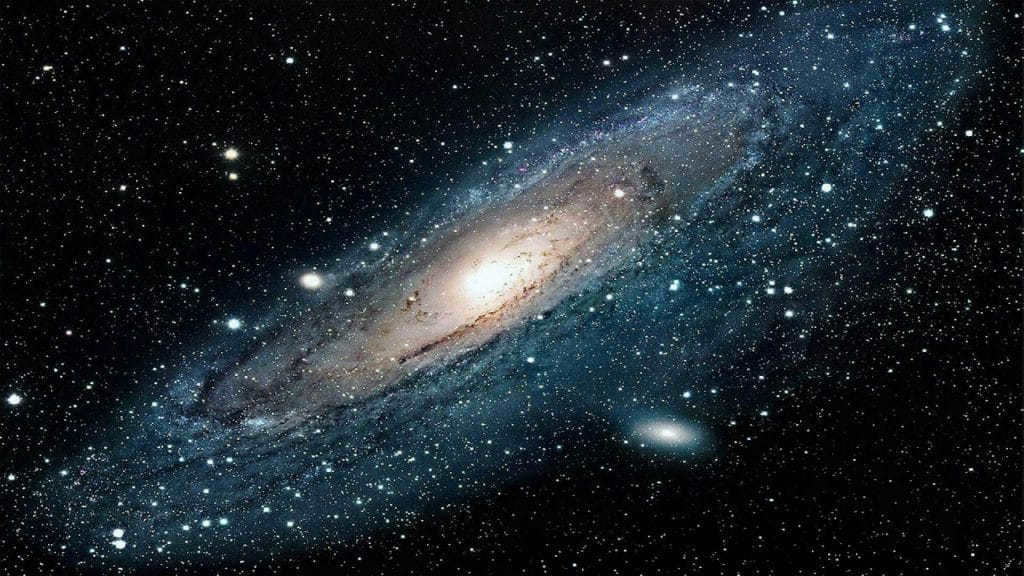
The Origin of Our Galaxy
As we explored the vastness of the universe, we gradually uncovered the intricate dance of celestial bodies. It became evident that these celestial bodies, including the Moon and the planets, revolve around a central point. The Moon, for instance, orbits around our own planet, Earth. In turn, our planet and others orbit around the Sun. This led to a natural curiosity: does the Sun itself orbit around a larger, more expansive star system?
Discovery by Galileo Galilei
Galileo Galilei, an Italian mathematician, physicist, and astronomer, played a significant role in advancing the field of stellar science. In the early 17th century, he devised a telescope comprising a convex lens and a concave eyepiece. This telescope had the ability to magnify objects three times. Galileo later improved his telescope to achieve a magnification of 32 times. Interestingly, it was Galileo who coined the term “telescope” for this scientific instrument.

The observations made through the telescope revealed that the Moon is adorned with hills and craters. The scientist provided an explanation for the origin of the Moon’s ash-colored light, discovered the phenomenon of libration, and even detected the presence of Jupiter’s satellites.
Furthermore, he was able to demonstrate that the Milky Way is actually a collection of countless stars. However, Galileo’s observations did not provide a definitive answer regarding the genesis of our galaxy, nor did they establish whether other galaxies resemble our Sun.
William Herschel’s groundbreaking discovery
In the 18th century, the renowned English scientist, William Herschel, embarked on a mission to meticulously count the stars that adorned the night sky. During his observations, he stumbled upon a remarkable phenomenon—a vast celestial circle, aptly named the “galactic equator,” that bisected the visible portion of the celestial sphere into two equal halves. Herschel noticed that this area contained the highest concentration of stars. Furthermore, he made a fascinating revelation: the number of celestial bodies progressively increased as the observer’s gaze turned towards the “galactic equator.” This groundbreaking observation provided compelling evidence that all cosmic entities within the observer’s reach were interconnected, forming a colossal system that spanned across the equatorial region.

William Herschel was able to depict the Milky Way in a diagram. To him, it appeared as a stretched out cloud with an irregular shape. Inside this cloud was the sun. This was how scientists had envisioned our Milky Way galaxy even before the twentieth century.
The Dutch astronomer J. Kapteyn provided a detailed explanation of our galaxy in 1920. His description closely matches what we know about it today.

The primary characteristics and parameters of the Milky Way
One of the key distinguishing features of our galaxy is its capacity to assimilate other clusters. Several galaxies orbit around the Milky Way, falling under its gravitational pull and being drawn into its arms. Currently, the Milky Way is in the process of absorbing a small galaxy in the constellation Sagittarius.
However, our galaxy is also interacting with Andromeda, a significantly larger stellar cluster. In a few billion years, Andromeda will engulf the Milky Way.
The fundamental characteristics of the Milky Way are as follows:
- It is a spiral galaxy;
- It is part of a Local Group consisting of other star clusters;
- It has a diameter of approximately 100,000 light-years;
- It contains an estimated 200 to 400 billion stars;
- The solar system rotates around the center at a speed of approximately 230 km/s;
- The mass of the solar system is about 3 trillion times the mass of the Sun;
- The age of the solar system is approximately 13.7 billion light years.
Mass
To determine the weight of such a massive object in the universe, calculations were used. The number of stars in our galaxy, estimated to be at least 200 billion, was taken into account, assuming that each star weighs as much as the Sun. These stars make up 4% of the total galactic mass. The gas, consisting of hydrogen and helium, weighs three times more than all 200 billion stars combined. The remaining mass is composed of dark matter. Altogether, the Milky Way weighs at least as much as 3 trillion suns, equivalent to approximately 6*10^39 tons.
Dimensions
The Milky Way is colossal in size, spanning more than 100,000 light years in diameter, equivalent to a staggering 940 quadrillion kilometers. Additionally, this immense galaxy has a thickness of approximately 1,000 light years.
Recent findings from 2020 propose that the diameter of the Galaxy could potentially extend to an astonishing 1.9 million light years. However, it is important to note that this information has not yet been substantiated or validated.
How Many Stars are in the Galaxy?
The precise number of stars in the Milky Way has not been determined. Current estimates range from 200 to 400 billion. Additionally, it is believed that there may be up to 100 billion brown dwarfs in our galaxy. These objects exist in the intermediate zone between stars and planets, with their mass being 13 to 77 times less than that of the Sun.
Deep within brown dwarfs, thermonuclear reactions occur. However, their power is not comparable to the brightness of a typical star. Furthermore, they gradually shrink and lose their brightness over time. The coldest brown dwarfs have temperatures similar to that of Earth, while the hottest ones can reach temperatures of 2800 Kelvin.
Luminosity
The Galaxy’s total luminosity is equivalent to approximately 20 billion times the luminosity of the Sun. In absolute terms, this represents an unimaginable amount of power – around 8∙10 36 watts. The Milky Way has a stellar magnitude of -21.
Classification and Overall Structure
The Milky Way is a typical spiral galaxy with a bar. This type of galaxy accounts for half of all star clusters in the universe. Among those, two-thirds are bar galaxies. These galaxies are relatively young and as they evolve, the bar component gradually disappears. The Milky Way consists of the following components.
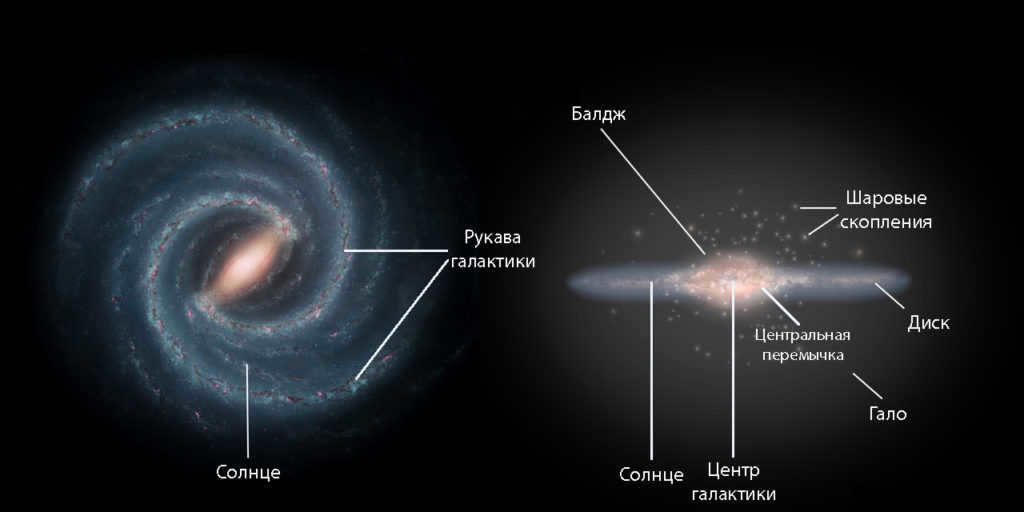
- The central part of a galaxy, known as the core, is where the majority of the star cluster’s mass is located. It is an active region, emitting more energy than all other celestial bodies combined.
- The bulge, also known as the balge, surrounds the core and consists of giant stars, old luminaries, and glowing gas clouds. These objects orbit the core at high speeds. Although it is the brightest part of the galaxy, it remains hidden from our view due to the sleeves of the Milky Way.
- The lintel acts as a bridge connecting the arms of the galaxy. Astronomers often compare it to a rough riverbed.
- The sleeves of the galaxy contain a significant amount of dust and gas, as well as young stars and numerous star clusters.
- A disk is a concentrated thin layer that contains the majority of the visible matter in the galaxy.
- The halo, on the other hand, is the remaining part of the star cluster. The exact length of the halo and its boundaries are still unknown.
- Globular clusters are clusters of stars that are held together by gravity and orbit the center of the galaxy as companions.
The night sky is adorned with numerous faintly glowing stars, giving the Milky Way the appearance of a subtle radiance. The optimal time for observing this celestial spectacle is during the months of August and September.
The Milky Way’s Structure and Composition
By rough estimates, there are over 200 billion stars within our galaxy. The majority of these stars are concentrated within a flattened disk-shaped region.
The Central Region
Within the heart of the galaxy lies a densely packed area known as the balge. With a diameter of 8 thousand parsecs, it takes on an ellipsoidal shape resembling a star cluster. Situated in the constellation Sagittarius, the core serves as the focal point. The Sun, located approximately 8500 parsecs away, or 27.7 thousand sv. years, or 262 quadrillion kilometers, is positioned at a considerable distance from this center.
Evidently, a colossal black hole resides in this particular region. With a mass 4 million times that of the Sun, it exerts an immense gravitational force. Additionally, there exists another massive object orbiting around it, surpassing the Sun’s mass by 1000 to 10000 times. Furthermore, several thousand smaller black holes also traverse the area, with a rotation period of approximately one hundred years. The gravitational influence emanating from this central point causes nearby stars to follow unique orbits. Scientists hypothesize that the majority of star clusters throughout the Universe revolve around black holes.

Within the regions being examined in the Milky Way, there is a high concentration of stars. For instance, in just one cubic parsec of this particular area, there are numerous stars. The distribution of the galaxy’s mass is such that the orbital velocity of these stars remains consistent, regardless of their distance from the center. The typical speed at which celestial objects circulate in this region is approximately 240 km/s.
In 2016, a group of Japanese researchers made a remarkable discovery in the heart of the galaxy: an additional colossal black hole. This object, along with its surrounding cloud, measures around 0.3 light years and weighs approximately 100,000 times that of the sun.
Ongoing studies pertaining to the structure of the Milky Way suggest that scientists will continue to astonish us with new findings.
Arch
This segment of the Universe spans approximately 27 thousand light-years. It traverses the central region at a 44° angle in relation to the demarcation between the Sun and the core. The majority of the stars observed in this vicinity are red stars, boasting an age far surpassing that of our own sun. Encircling the juncture is the “Five Kiloparsec Ring,” which is primarily composed of molecular hydrogen, serving as a catalyst for stellar formation.
In the latter half of the 20th century, scientists postulated that the Milky Way exhibits a spiral-like structure with an arch. In 2005, through the utilization of a formidable telescope, this theory was substantiated. Furthermore, the arch was discovered to possess a considerably larger diameter than previously estimated.
The galactic disk
The galactic disk of the Milky Way has a diameter of approximately 100,000 light-years. It spins at a much faster rate compared to the halo, and its rotational speed varies. As it gets closer to the black hole, its rotational velocity decreases, reaching almost zero. However, at a distance of around 2,000 light-years, the velocity increases to 240 km/s. After a slight decrease, it then stabilizes at this level. The total mass of the galactic disk is estimated to be 150 billion times the mass of the Sun.
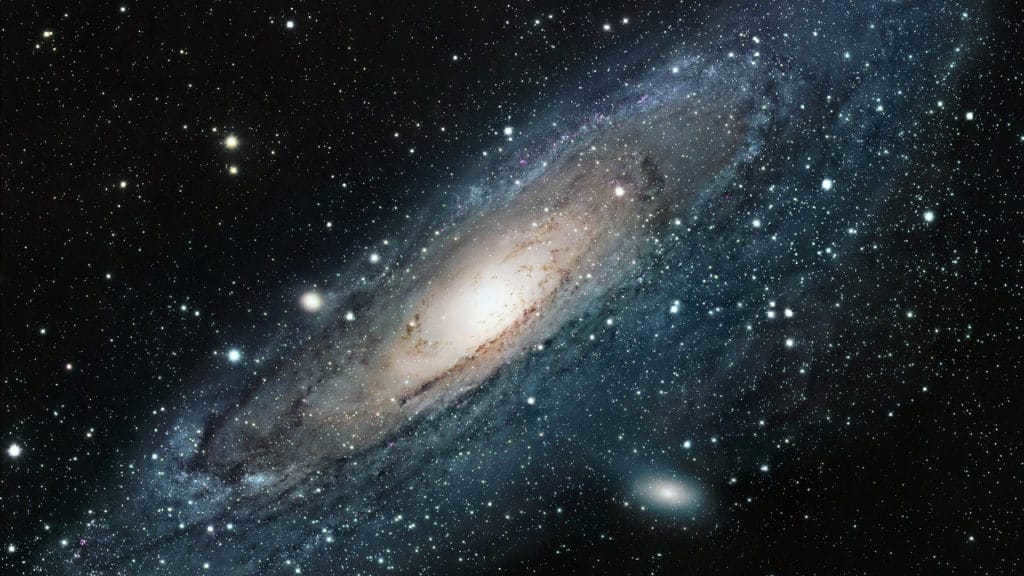
Within the vicinity of the galactic disk, there exist youthful stars (whose age does not exceed a few billion years). These nascent celestial bodies compose a planar component, with a significant number of objects possessing elevated temperatures. Adjacent to the plane of the disk, the majority of gas exists in the form of gas clouds. These clusters of gas possess a diameter of approximately one parsec. Enormous gaseous entities are dispersed throughout the vastness of space, spanning thousands of light years.
Spiral Arms
The Milky Way, being a spiral star cluster, possesses spiral arms that are situated in the plane of its disk. The disk itself is located within the corona. These arms take the form of sleeves:
Positioned on the inner side of Orion’s arm is our Sun, which orbits around the core at a velocity of approximately 230 kilometers per second. The Sun completes one revolution around the galaxy’s center in approximately 240 million years.
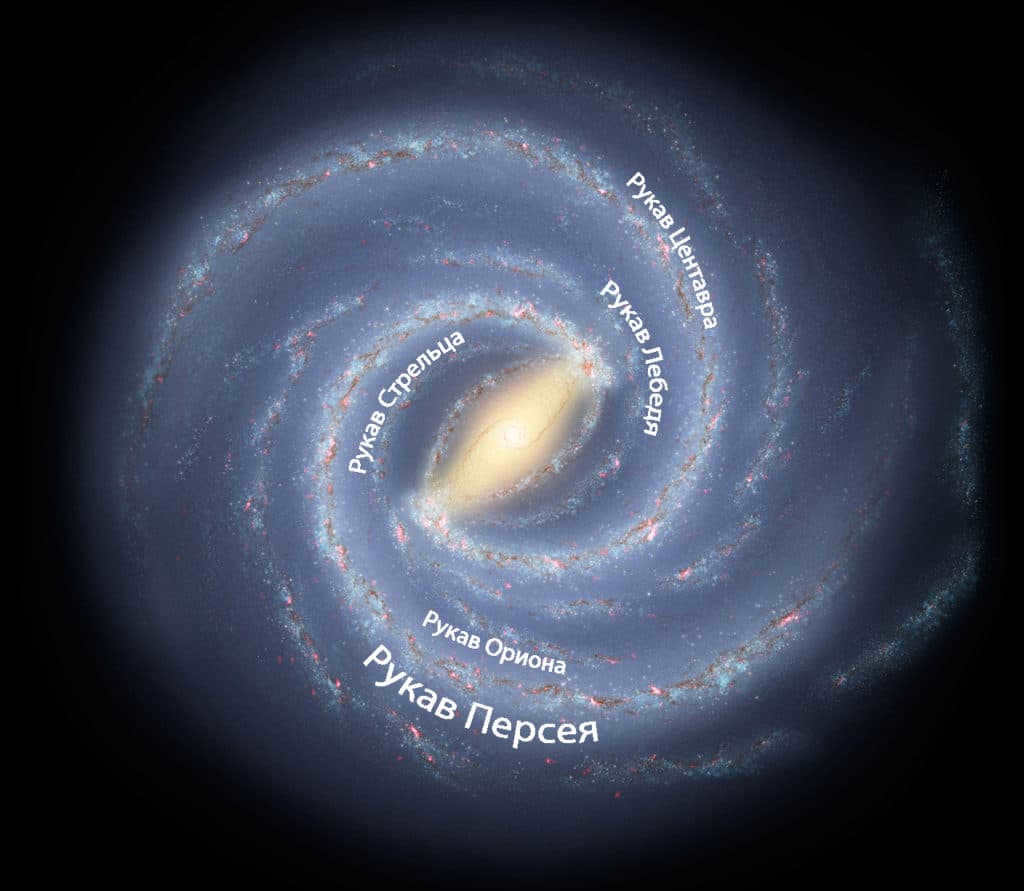
Galactic Halo
The galactic halo is a spherical region that extends beyond the boundaries of the Milky Way by approximately 5 to 10 light-years. It has a temperature of around 500,000 degrees Kelvin. Composed of older, smaller, and dimmer stars, as well as globular clusters, the halo is primarily located within 100 thousand light-years from the center of the Milky Way. However, there are also some globular clusters that can be found at distances greater than 200 thousand light-years from the galactic center. Interestingly, the center of symmetry of the halo aligns perfectly with the center of the galactic disk.
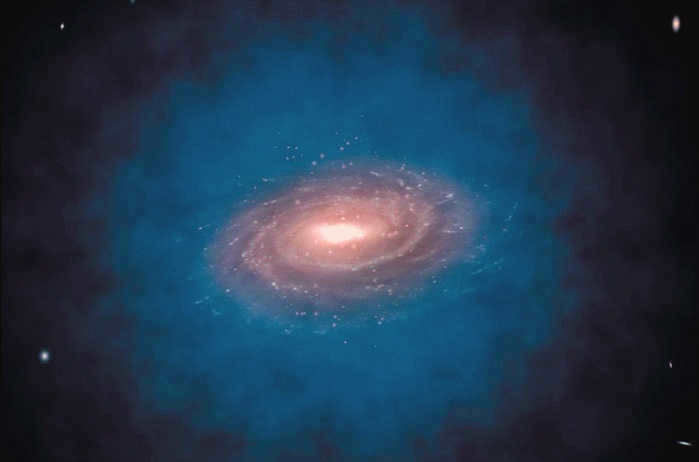
The objects in the halo follow highly elongated orbits, exhibiting slow rotation in general. Some stars in this region display chaotic motion.
The Solar System’s Position in the Galaxy
Recent studies indicate that the distance between the Sun and the galactic center is approximately 27 thousand light-years. Preliminary estimates suggest that our star is about 35 thousand light-years away from the junction zone.
Astronomers have successfully studied the areas surrounding the Sun, specifically the Perseus and Sagittarius arms, which are approximately 3 thousand light-years from our planet. Our star is situated in the center between these formations.
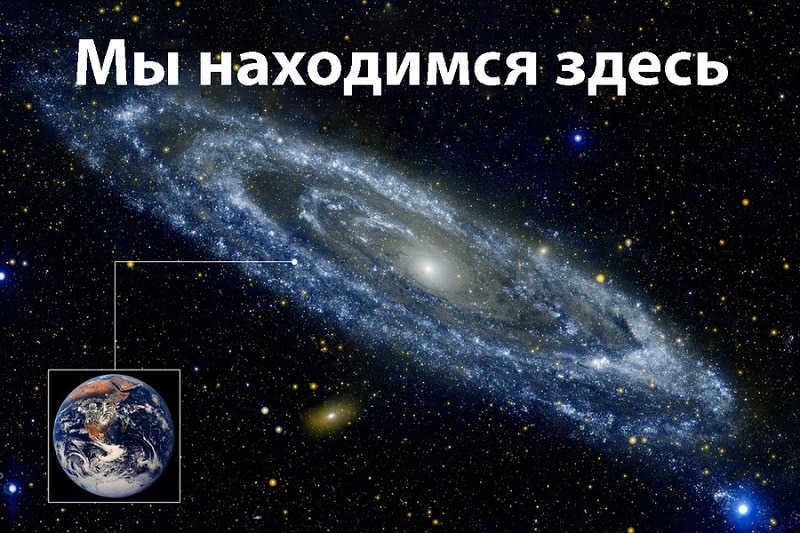
The Sun’s revolution around the galactic center occurs at a nearly identical speed to the compaction wave that forms the arms. This phenomenon is attributed to the Sun’s position in the corotational center. This location is crucial for the Earth’s ability to sustain and develop life. The spiral arms emit highly potent radiation that could potentially eradicate all forms of life. Even an atmosphere would not be sufficient protection. Therefore, we are fortunate to inhabit a region within the Milky Way that is shielded from cosmic disasters.
The Position of the Milky Way in the Universe
A team of astronomers from Hawaii has identified the precise location of our galaxy within the vast expanse of the cosmos. The Milky Way is situated within the immense supercluster known as Laniakea. Superclusters are the largest known structures in the universe, composed of smaller localized clusters and massive clusters, each housing hundreds of galaxies. These superclusters are all interconnected, forming a complex network of cosmic entities.
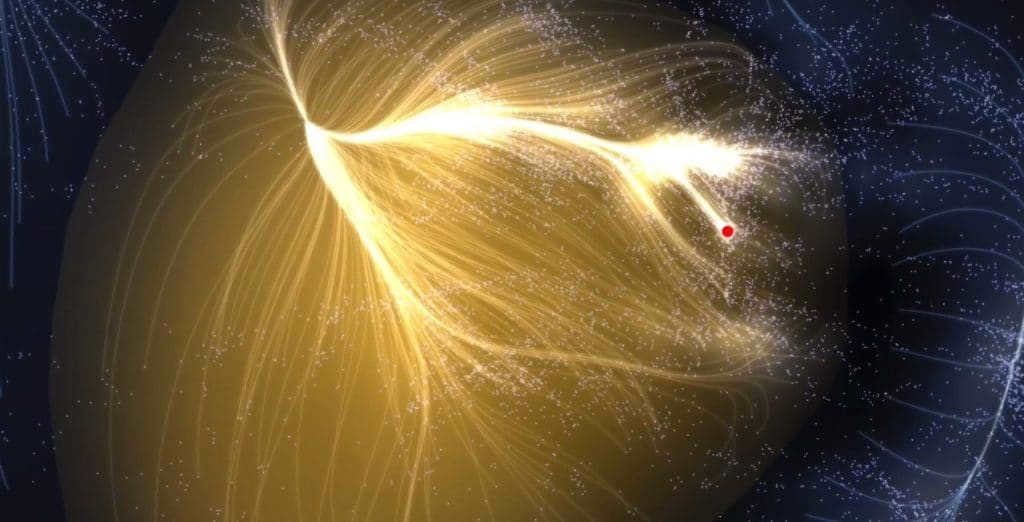
The Virgo super cluster is situated in Laniakea. One of its constituents is the Local Group, which includes the Great Attractor. Our Milky Way galaxy is located within the Local Group. Laniakea is a part of the Pisces-Keith complex. The motion of objects within Laniakea has yet to be fully studied by astronomers. It is believed that our Milky Way galaxy is gradually moving deeper into this cluster.
The Milky Way Galaxy and its Surroundings
Ever since the Big Bang and the formation of the cosmos, there has been a constant movement of everything within it. It was once believed by scientists that the Milky Way comprised the entire Universe, with nothing existing beyond its borders.
Thanks to the advancements in modern telescopes, we now have a better understanding of what surrounds our galaxy. The Milky Way’s “neighbors” consist of objects within the Local Group, with the largest being the Andromeda Nebula. Slightly further away lies the Triangle Nebula, while surrounding them are dwarf clusters acting as satellites.
Within the Local Group, there are also elliptical and irregular galaxies, all of which are located within specific constellations.
The Encounter of the Milky Way and Andromeda Galaxies
The Milky Way galaxy not only revolves around its center, it also traverses the vast expanse of the universe following its own predetermined path. Based on scientific calculations, it is estimated that in approximately 4 billion years, our galactic abode will collide with the neighboring Andromeda Nebula. Both celestial objects are steadily converging at a velocity of 120 kilometers per second. Interestingly, if one were to observe this event from the perspective of the Andromeda galaxy, Earth would appear to be located in the constellation of Canis Minor, also known as the Lesser Dog.
The actual encounter between the Milky Way and Andromeda galaxies will unfold gradually, and it remains uncertain whether these cosmic fireworks will be discernible to observers on Earth. It is highly unlikely that this astronomical event will have any direct impact on our Sun.
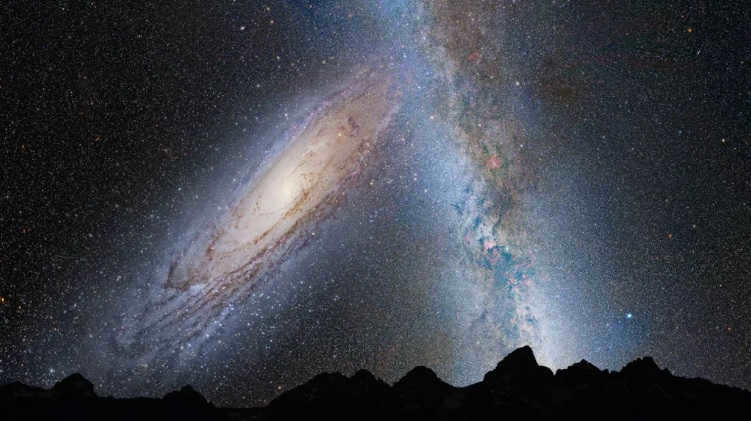
There is a possibility that the solar system could potentially be ejected from the newly formed galaxy, resulting in it becoming an intergalactic entity. This occurrence would not have any adverse implications for the solar system, aside from altering the aesthetics of the starry sky as observed from Earth. The constellations of the Milky Way would also undergo transformations. However, this event would not have any detrimental consequences for life on Earth, as our atmosphere effectively shields us from cosmic radiation. The evolution of the Sun, on the other hand, holds significantly greater importance for the sustenance of life.
The Galaxy’s Evolution and Future
The Milky Way is considered to be an ancient galaxy, with its oldest star estimated to be around 13.7 billion years old. This makes it only slightly younger than the universe itself, which is thought to be approximately 13.8 billion years old. During this time, the Milky Way and other galaxies were undergoing rapid evolution, producing heavy elements like carbon and oxygen. Without these elements, the stars in the Milky Way would have burned out quickly and not reached their current impressive sizes.
Throughout its history, the Milky Way has been continuously absorbing matter from its surrounding halo. This process is ongoing even today. Gas clouds falling into the galactic disk serve as the raw materials for the formation of new stars. In its early stages, the Milky Way also underwent mergers with smaller galaxies, further contributing to its growth and evolution.
The Milky Way has only experienced half of its lifespan: its stars are still young, but it is depleting its gas reserves for the formation of new stars. As of now, there are no indications that our galaxy is transitioning into a red sequence galaxy.
At present, the Milky Way is in the process of absorbing the Large and Small Magellanic Clouds. These clouds are wrapping around the southern pole of the galactic cluster. It is certain that the Milky Way will eventually collide with Andromeda.
During this collision, our galaxy will not disappear and the planets within the Milky Way will not be obliterated. Rather, it will become part of a new cluster. However, even science fiction writers would not venture to imagine such a distant future, as it spans a much longer timeframe than the existence of life on our planet.
Mythology
Ancient legends offer various explanations for the creation of the universe.
Armenian
The Armenian people attribute their origins to the divine figure Vahagn, who once stole straw from an Assyrian ancestor and ascended to the heavens. During his ascent, he inadvertently dropped some straw, forming a celestial path. To this day, the Armenian galaxy is referred to as “the road of straw”. Similar tales of scattered straw can be found in Arab, Jewish, Persian, and Turkish mythologies.
Hungarian
Legend has it that in times of peril, Attila would descend to the earth using the celestial pathway known as the Milky Way. The luminous flashes observed during this descent were erroneously attributed to the sound of his horse’s hooves hitting the ground.
Greek
An ancient Greek myth recounts the story of Hera, who accidentally spilled her milk across the sky while nursing Heracles, her supposedly legitimate son. It was later revealed that Heracles was the result of an affair between Zeus and a mortal woman. Feeling betrayed, Hera abandoned the child, and the spilled milk, now dispersed across the firmament, gave rise to the name of our galaxy.
Indian
The ancient Indians held the belief that the Milky Way was formed by the milk of a crimson-colored cow that traverses the sky every night. The Rigveda mentions the divine path of Aryaman, while the Bhagavata-purana describes the celestial dolphin’s belly.
Eastern Mythology
In Vietnamese, Chinese, and Japanese mythologies, the galaxy is often compared to a shimmering silver river. Additionally, the Chinese also refer to the star cluster as the “yellow river”.
The mythology of indigenous peoples in North America
Eskimo legends recount a trail of ashes that materialized after a young girl scattered them across the heavens. Her intention was to guide people during the night. The Eskimos also speak of the imprints left by a raven, the deity responsible for creating the world, as it traversed the sky. Conversely, the Cherokee believed that the Milky Way came into existence after a hunter absconded with another man’s wife, leading her dog to consume cornmeal and scatter it across the firmament. Intriguingly, tribes residing in the Kalahari Desert region share a similar account.

